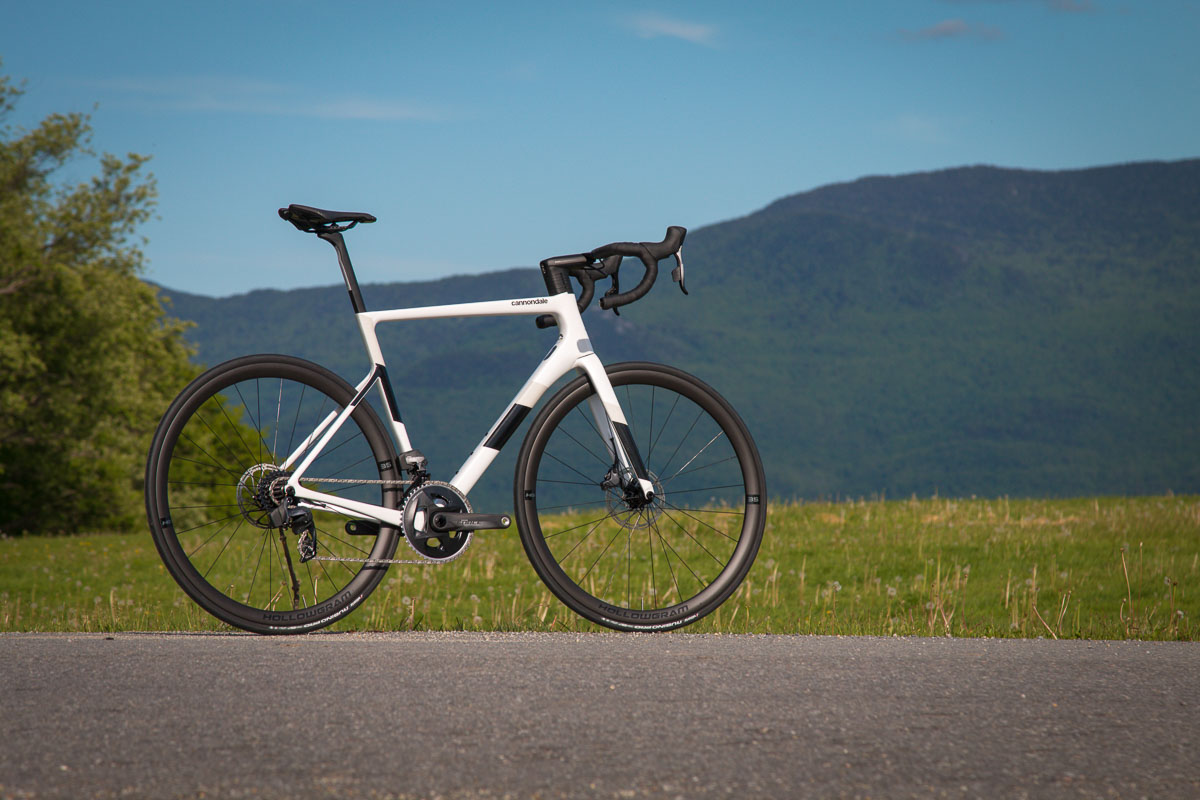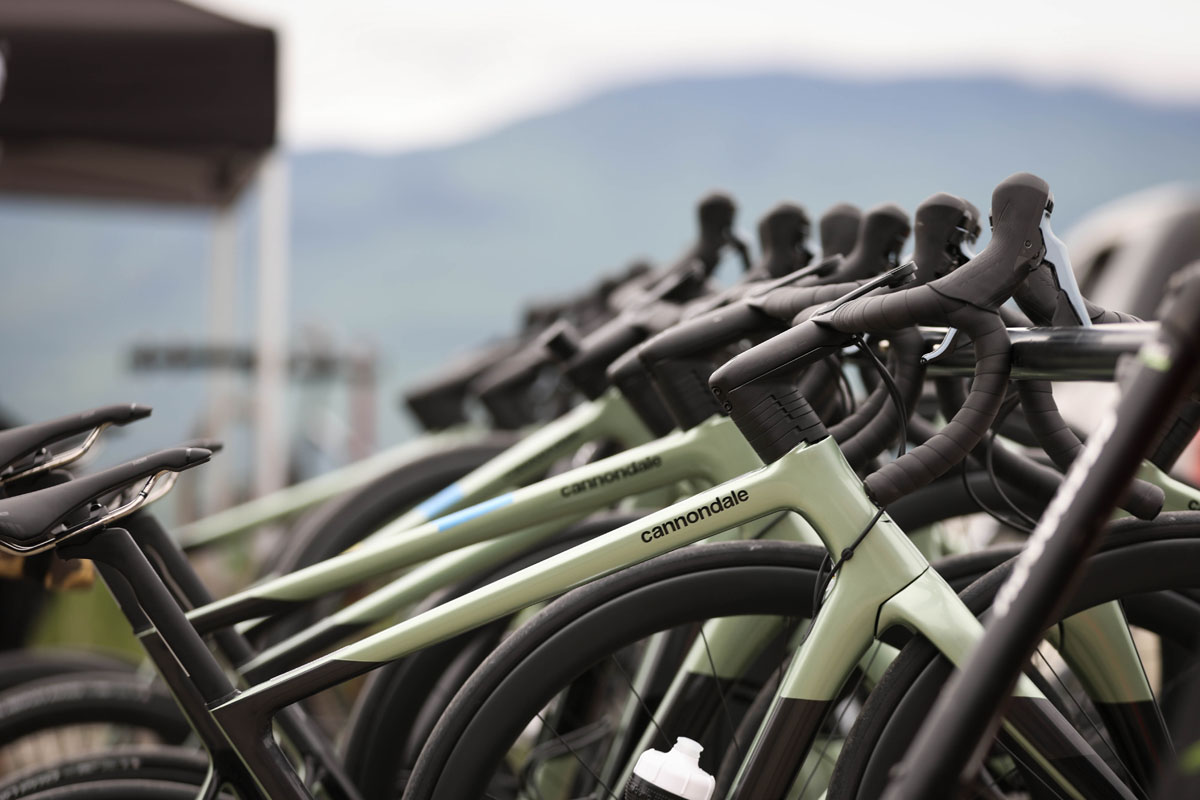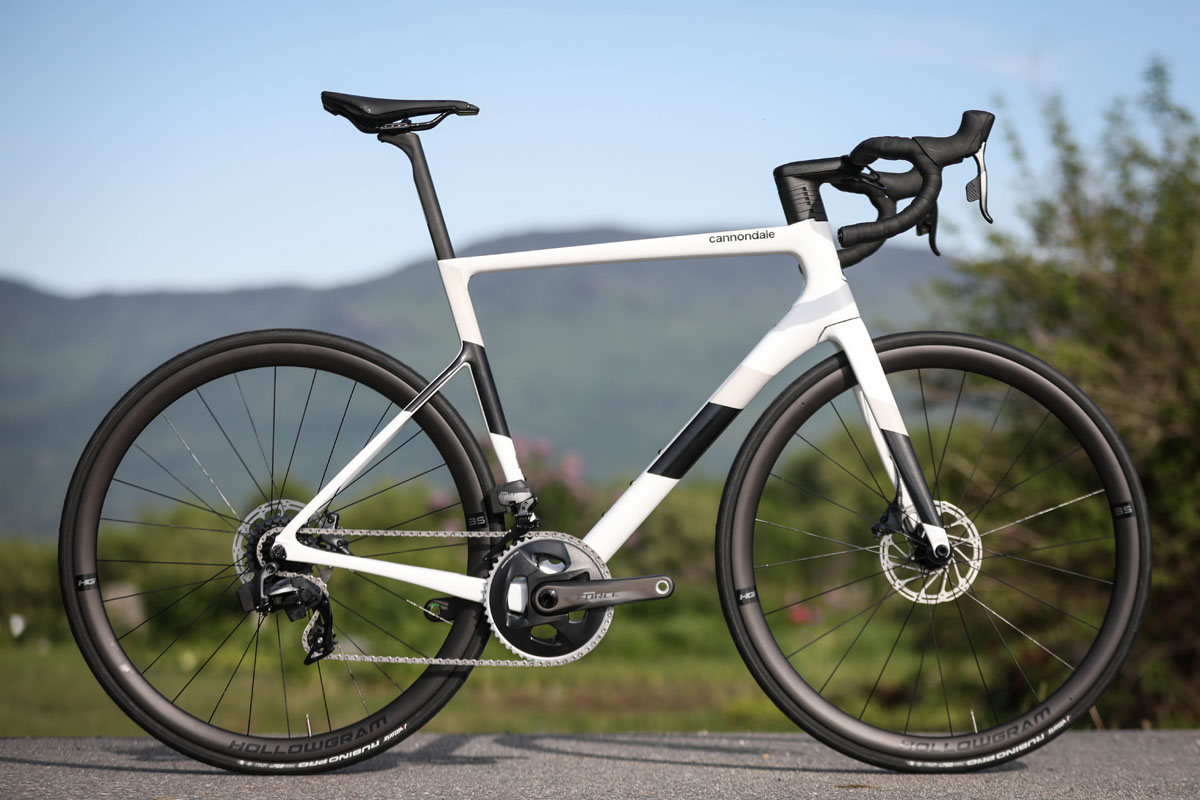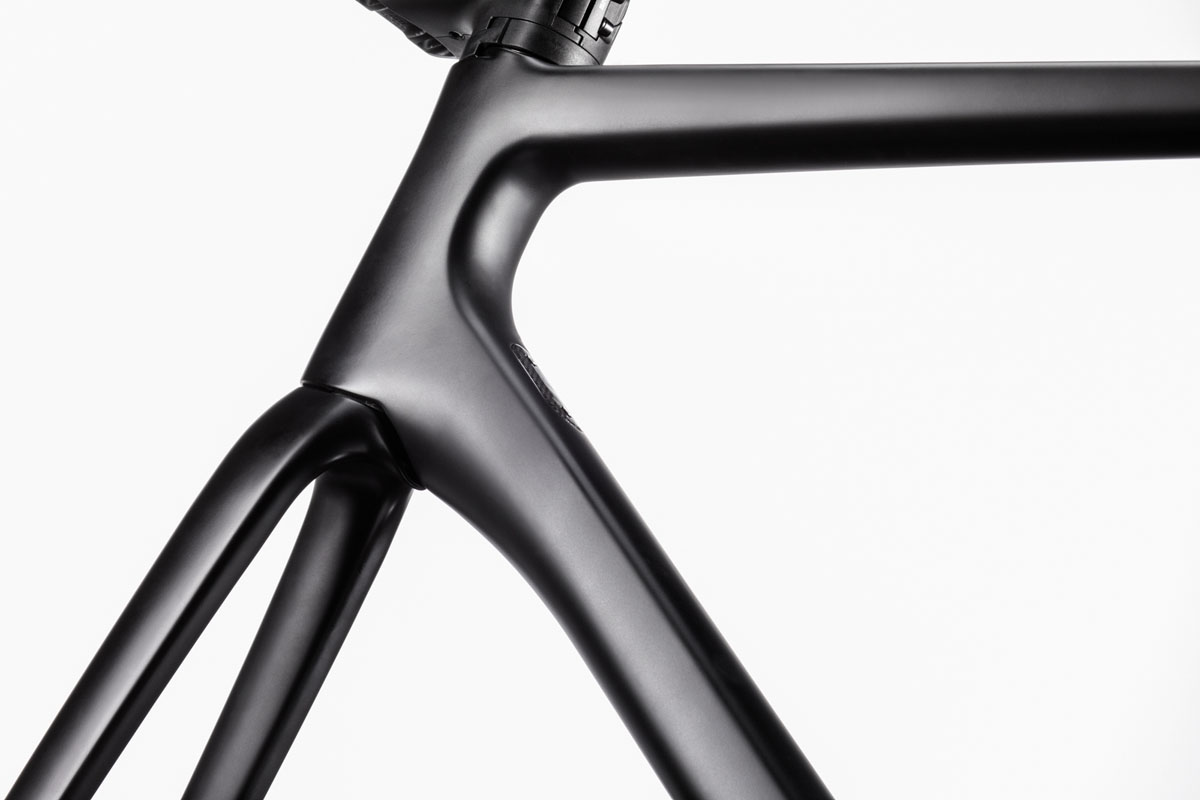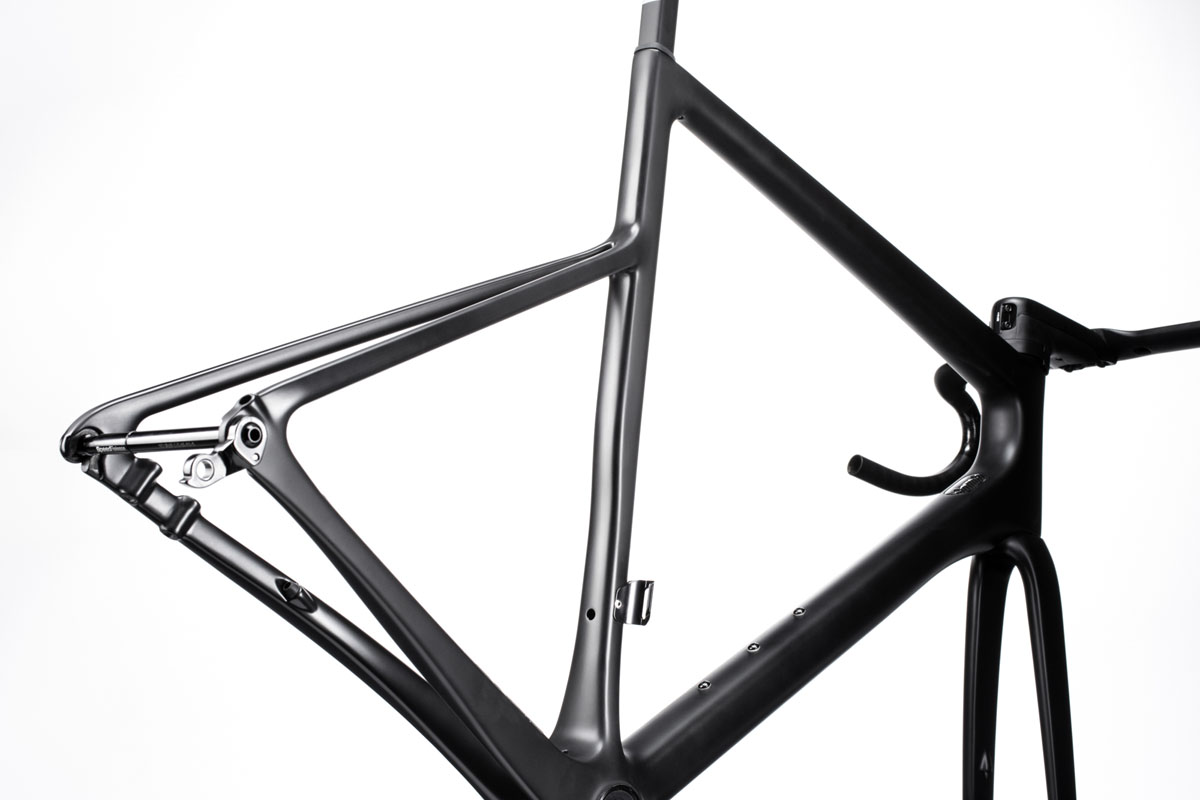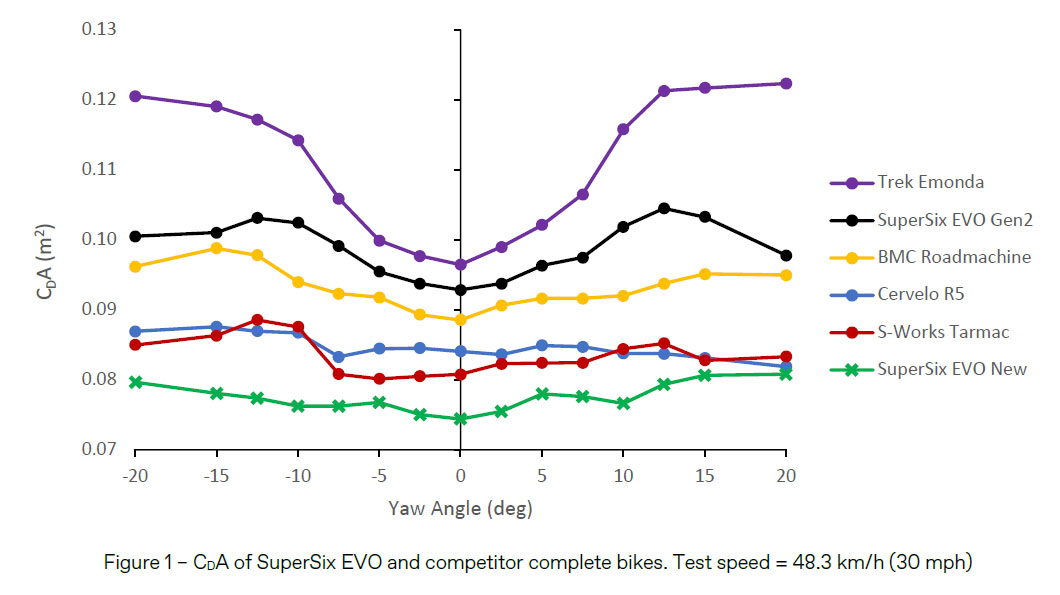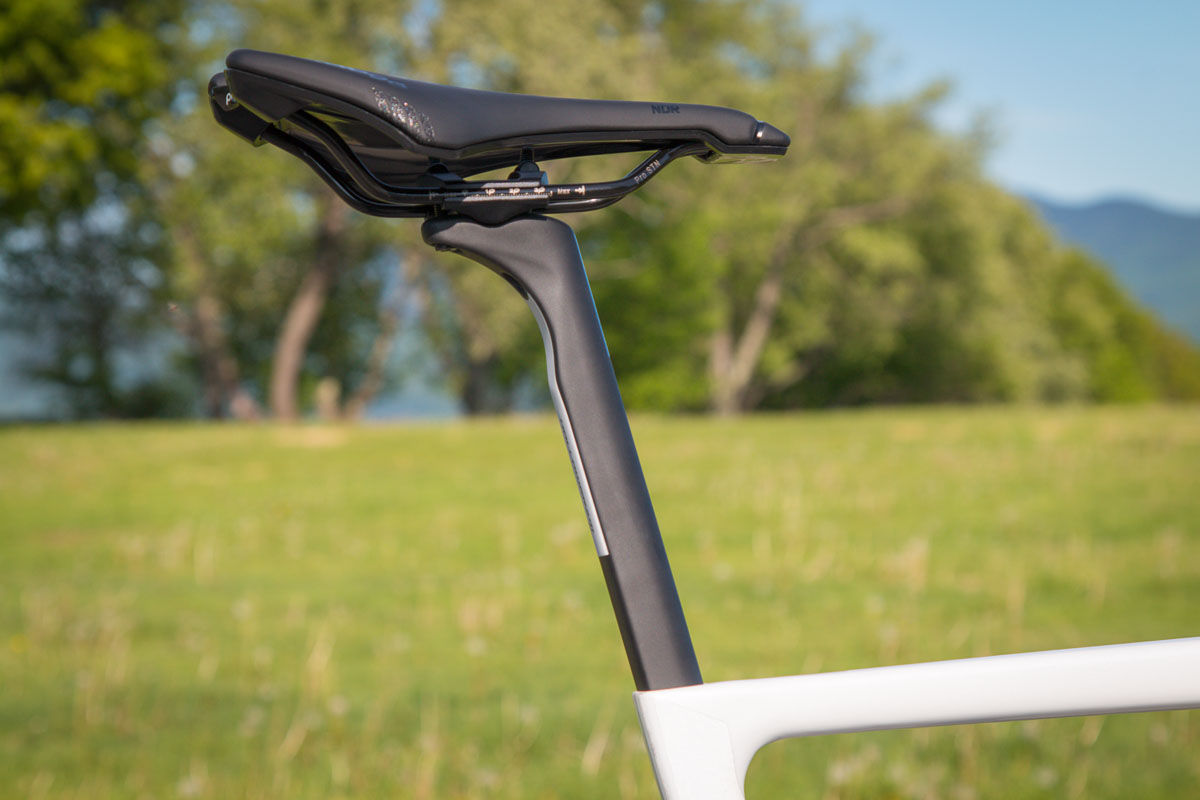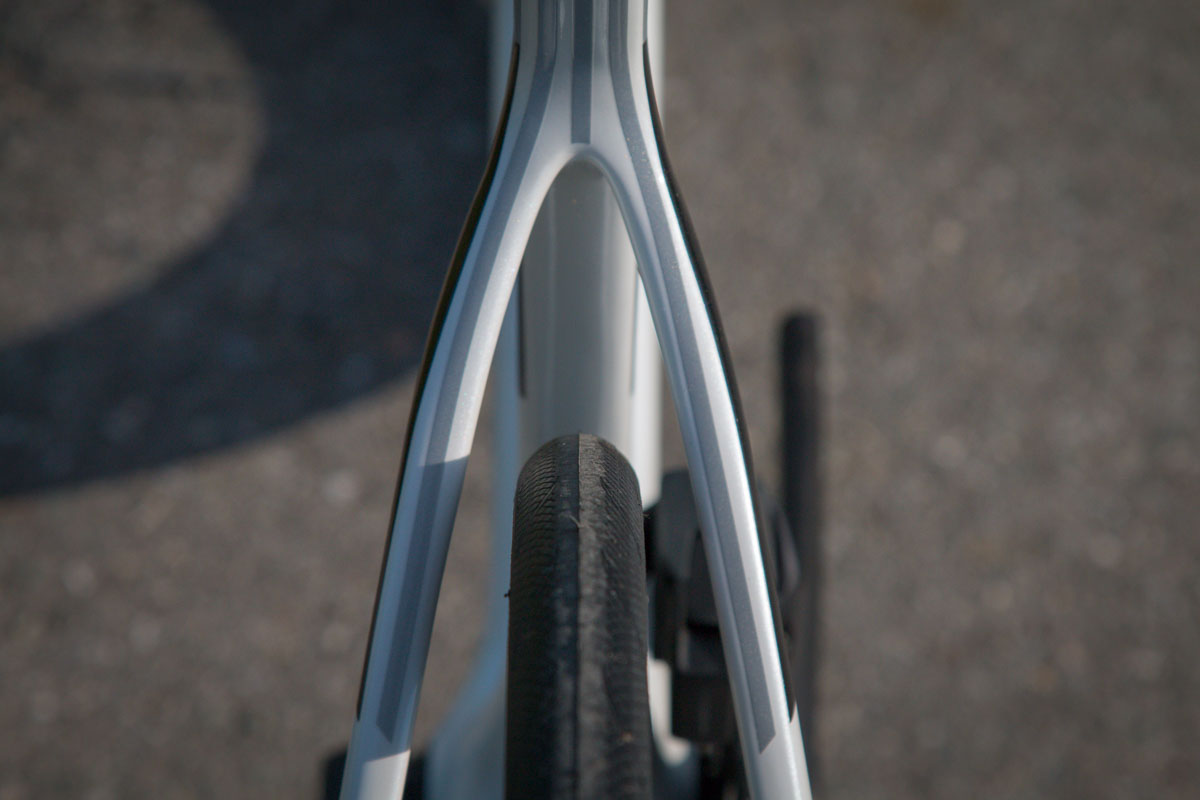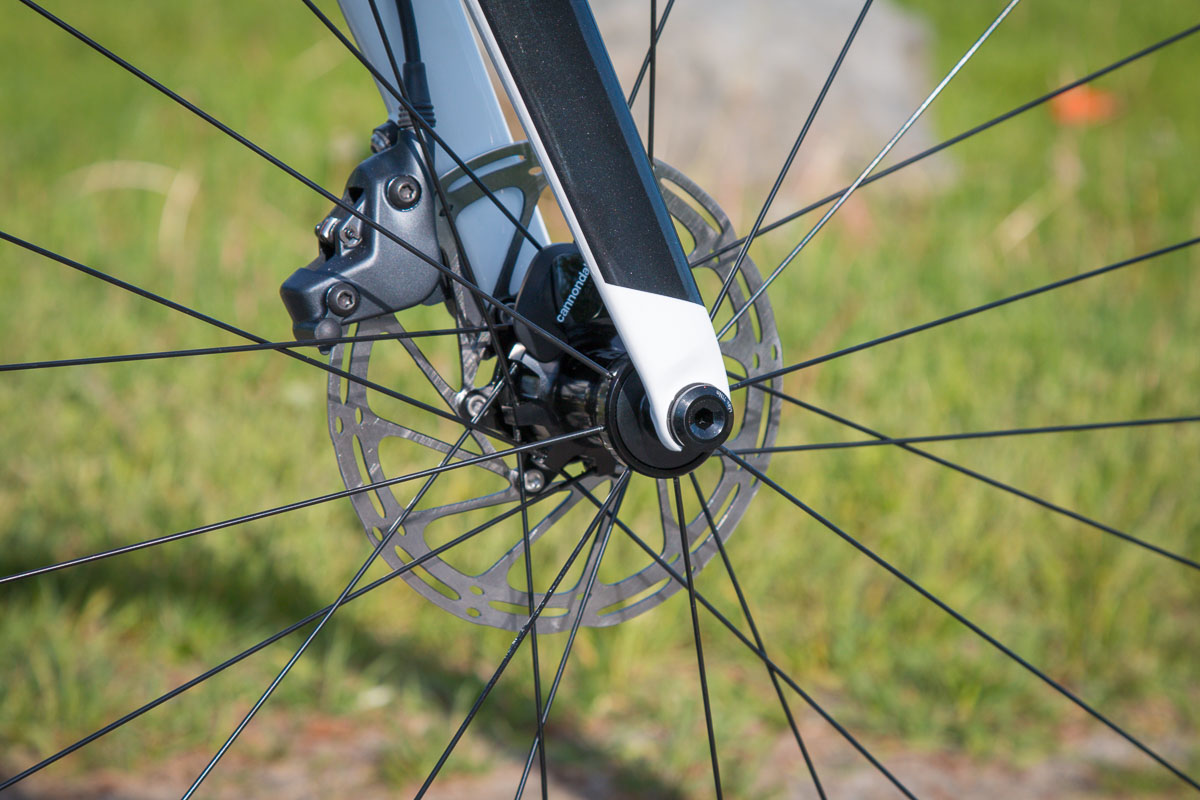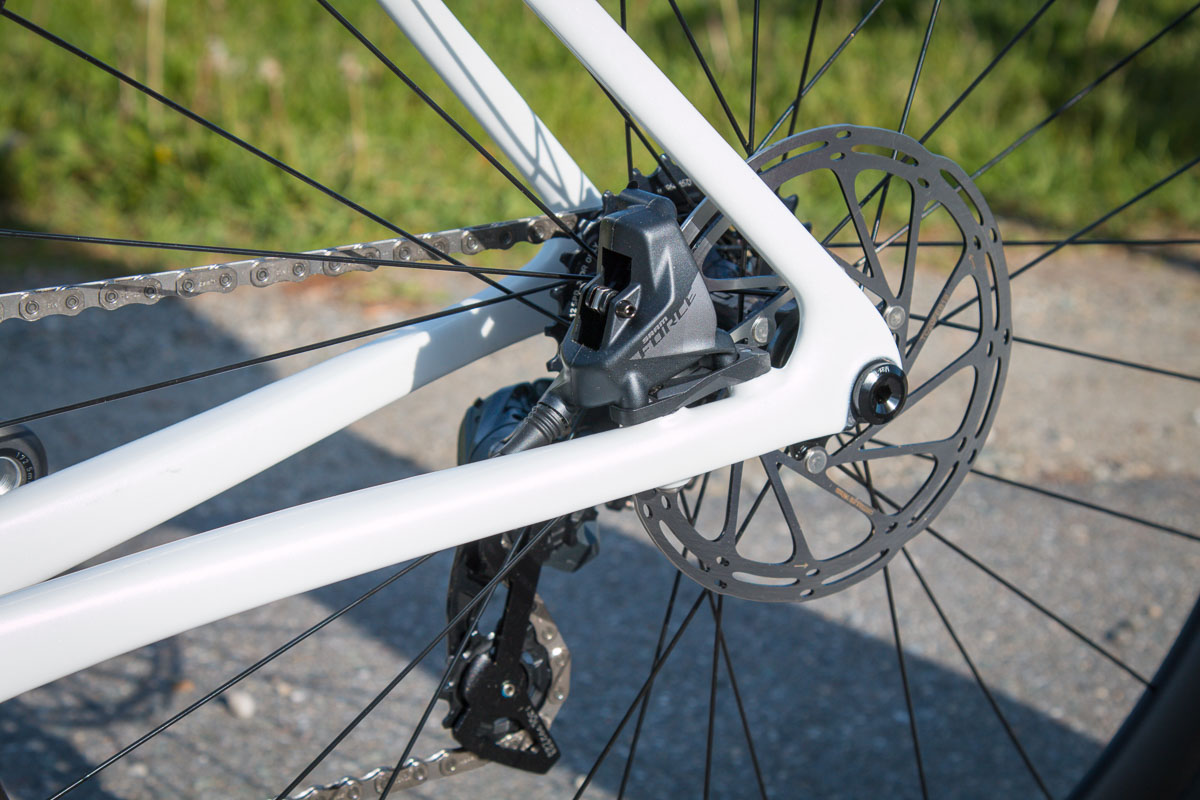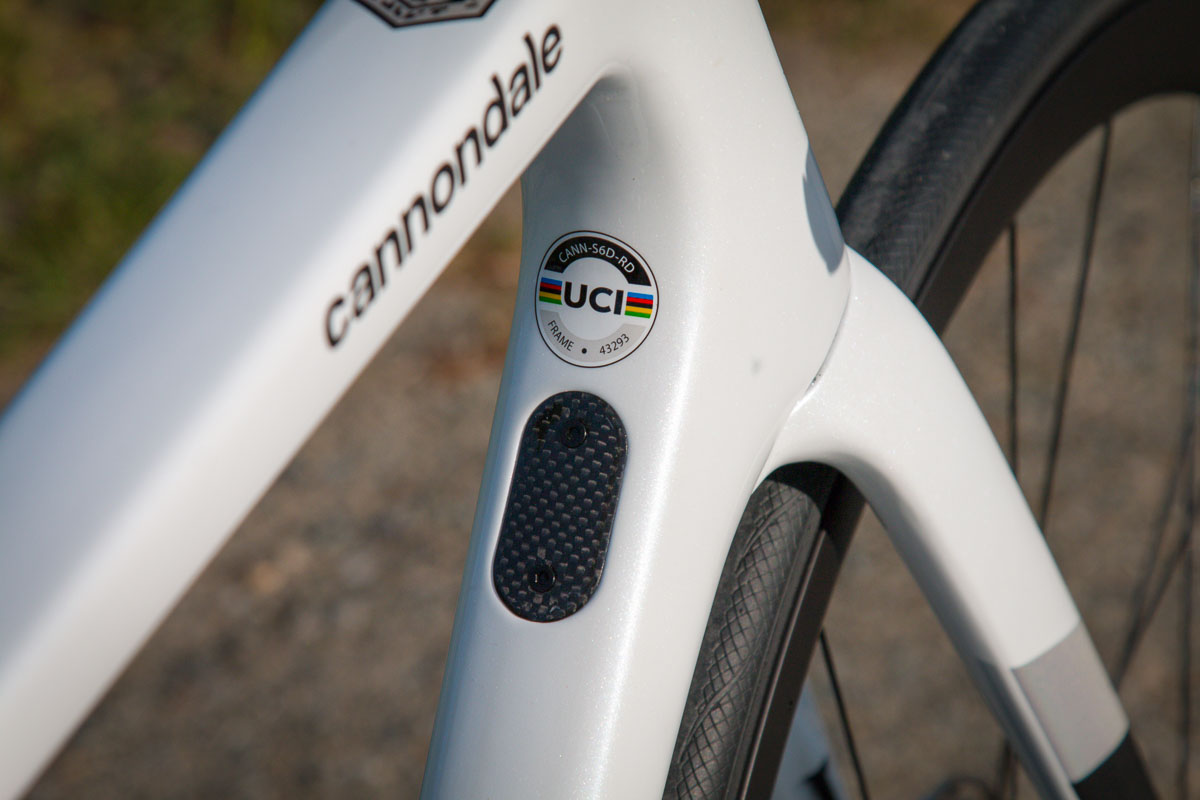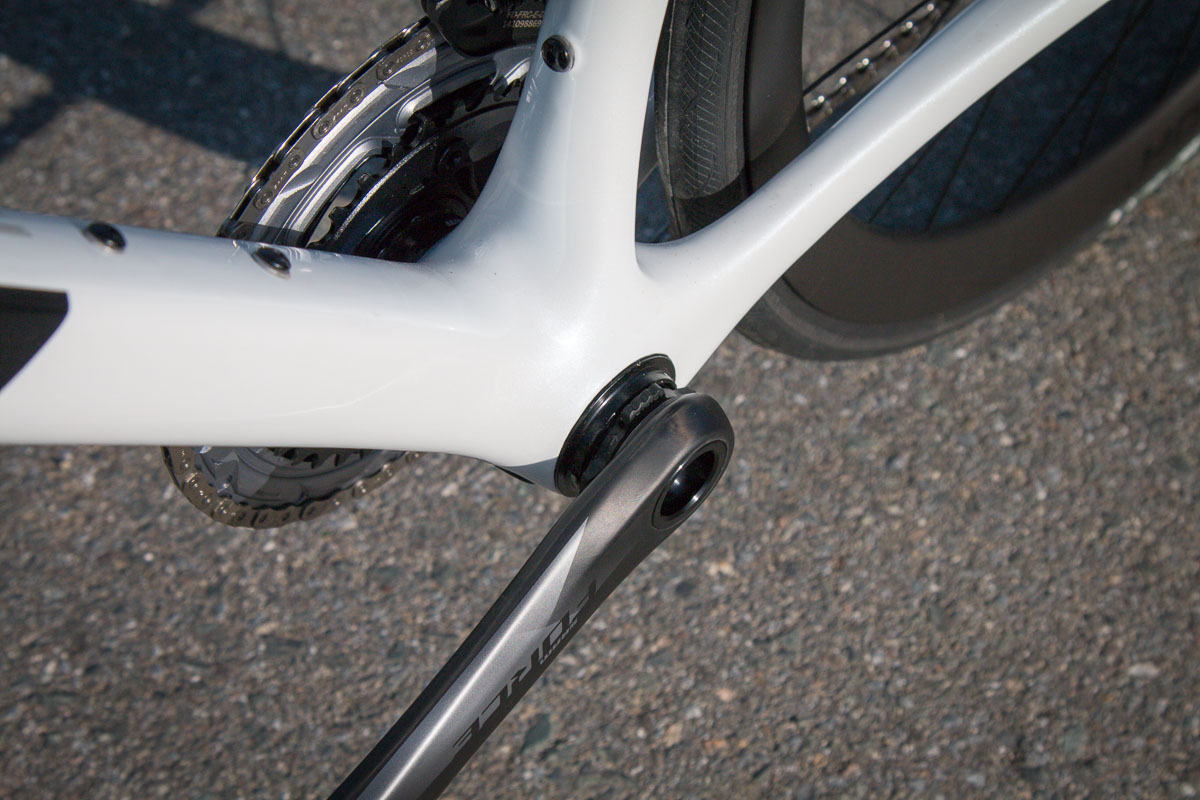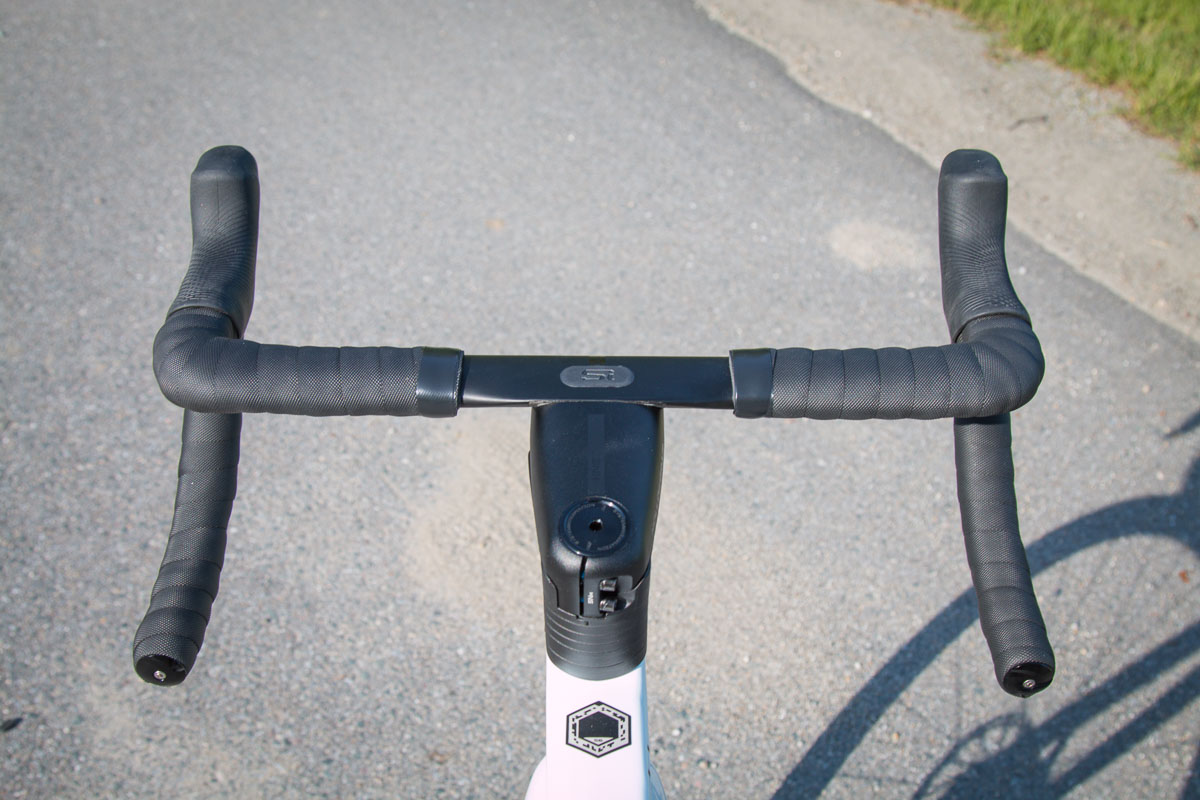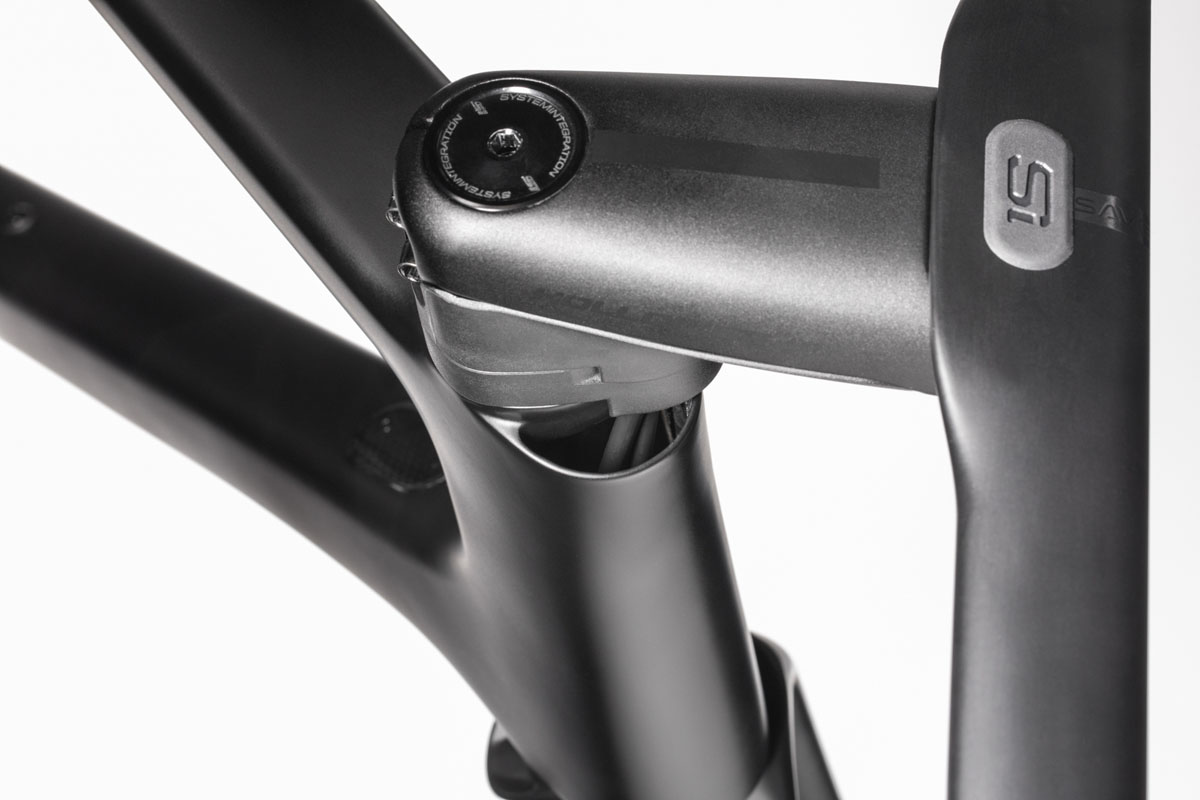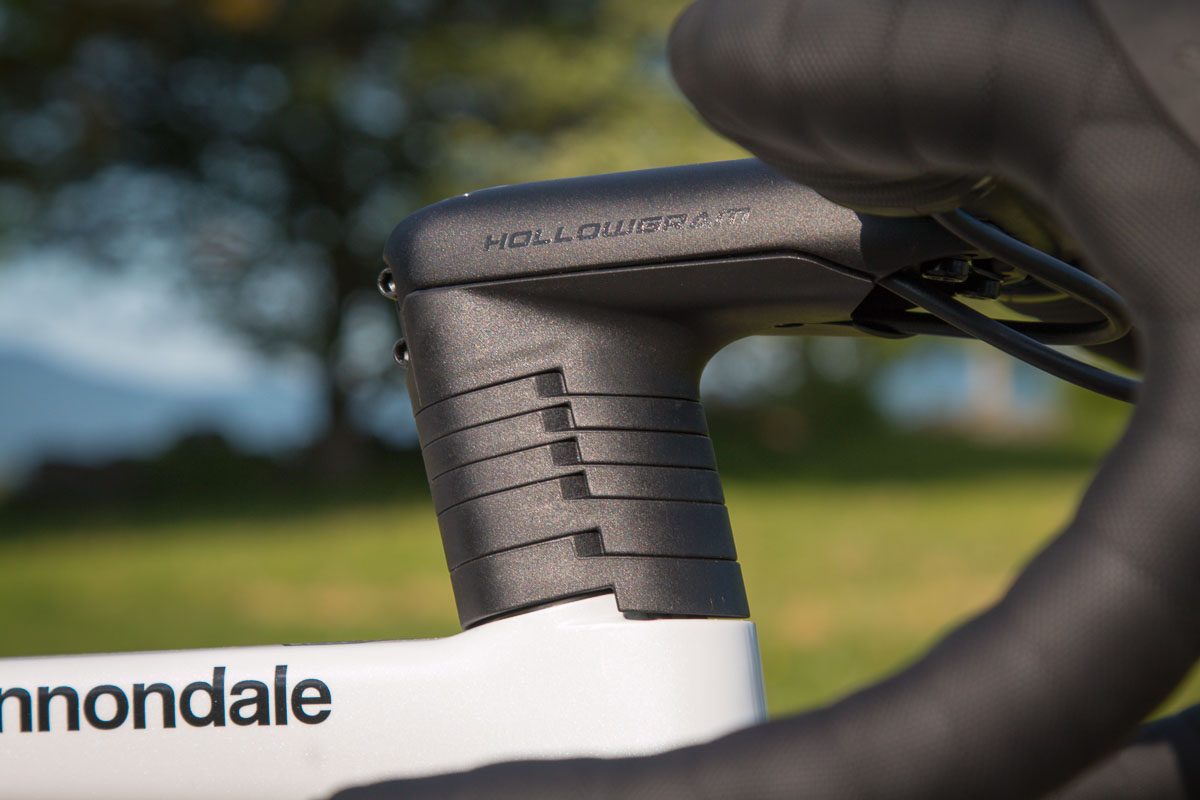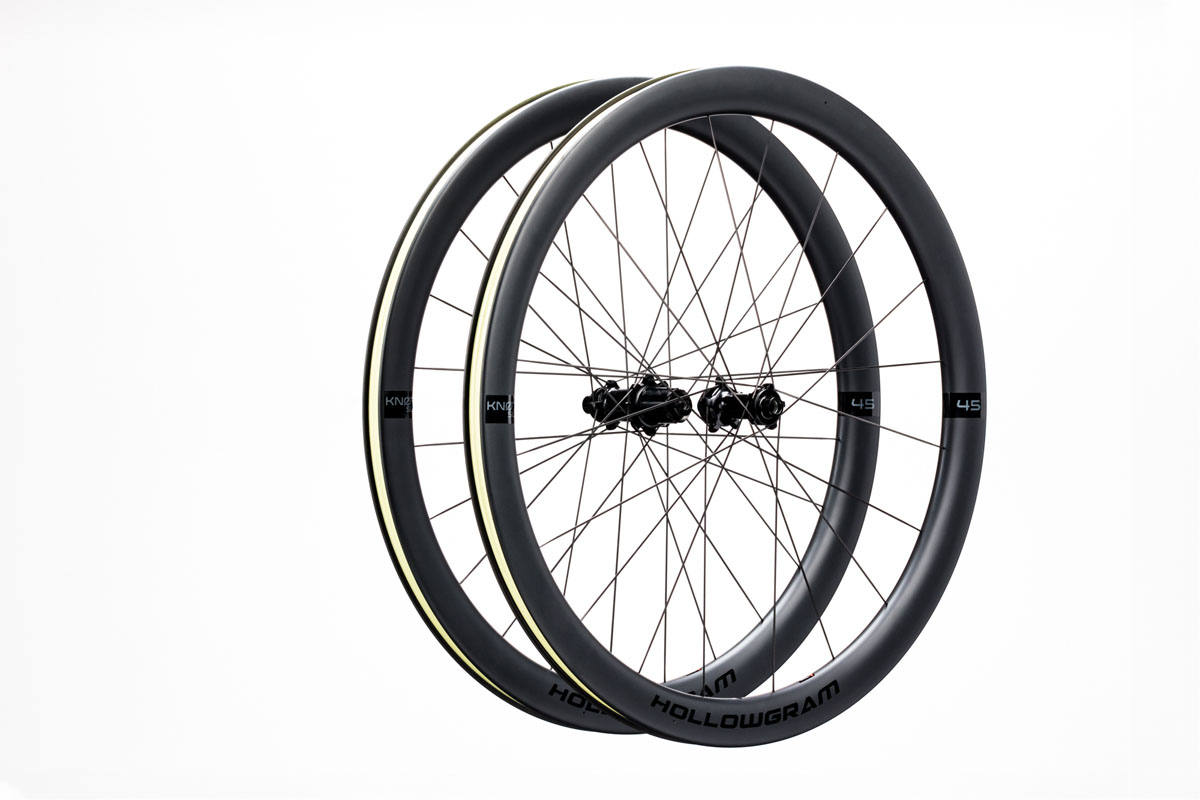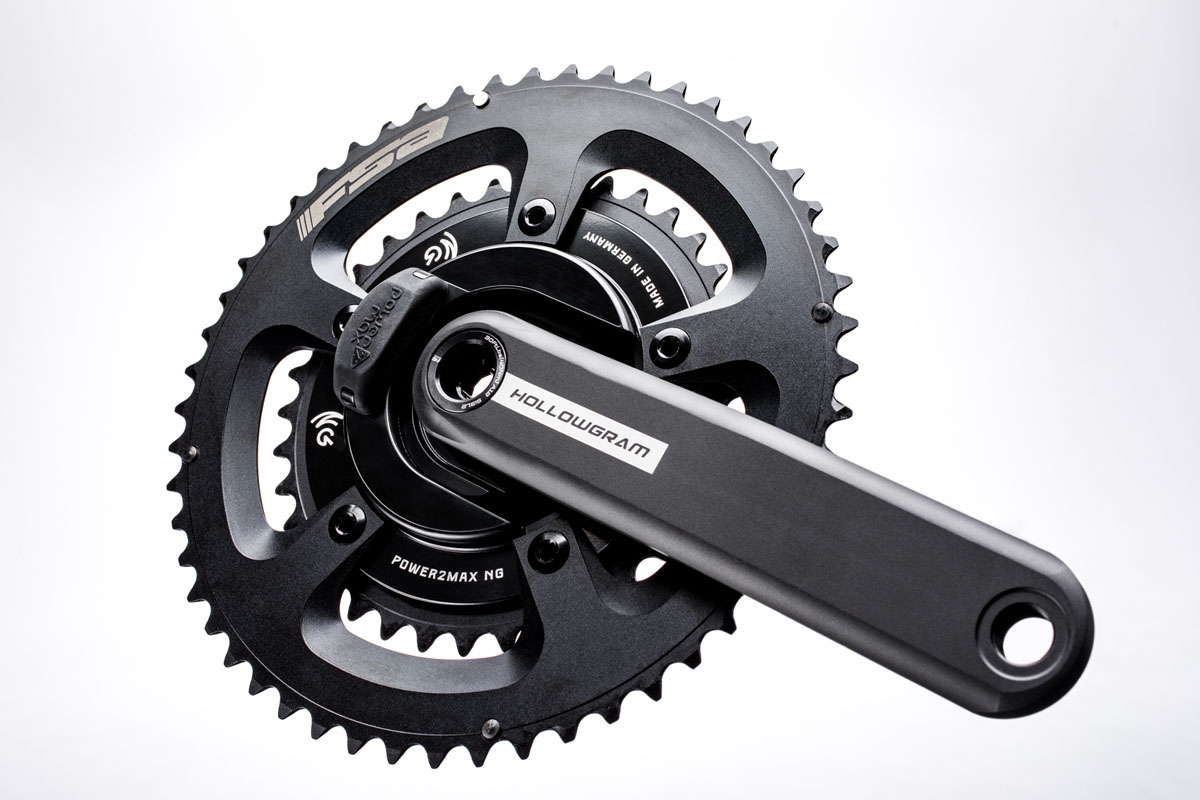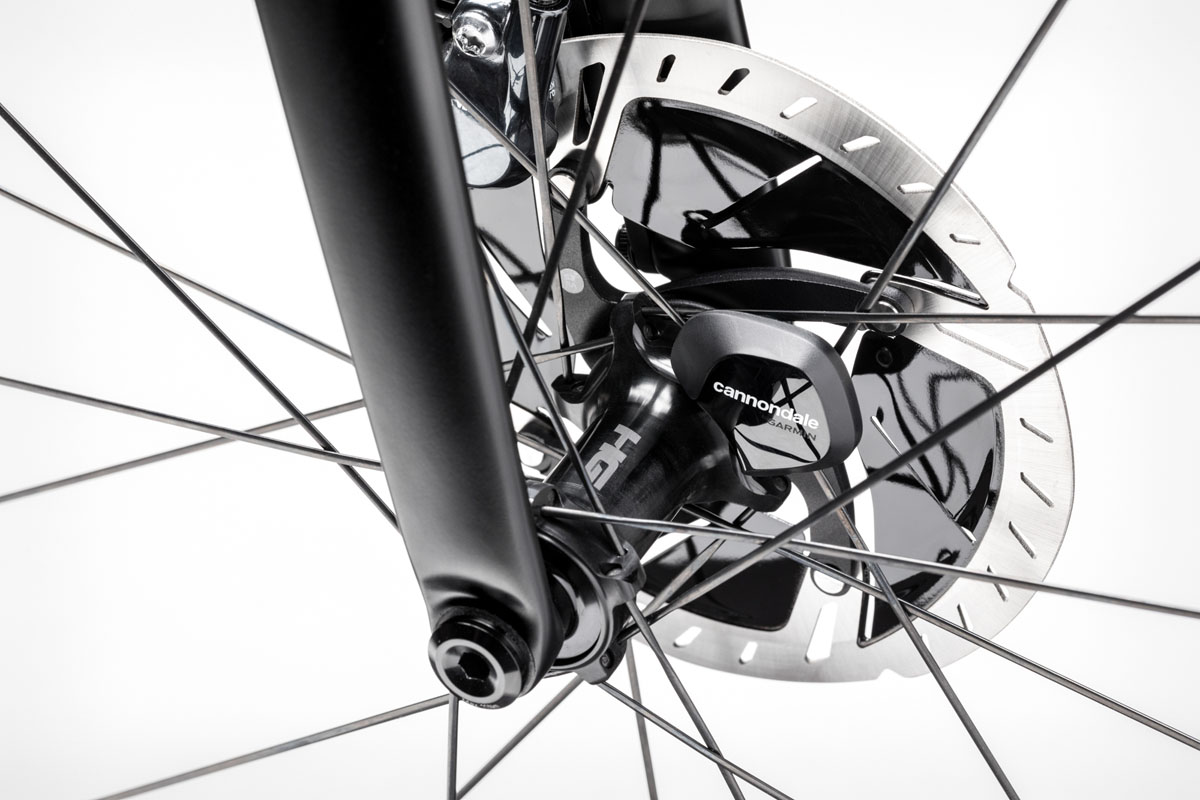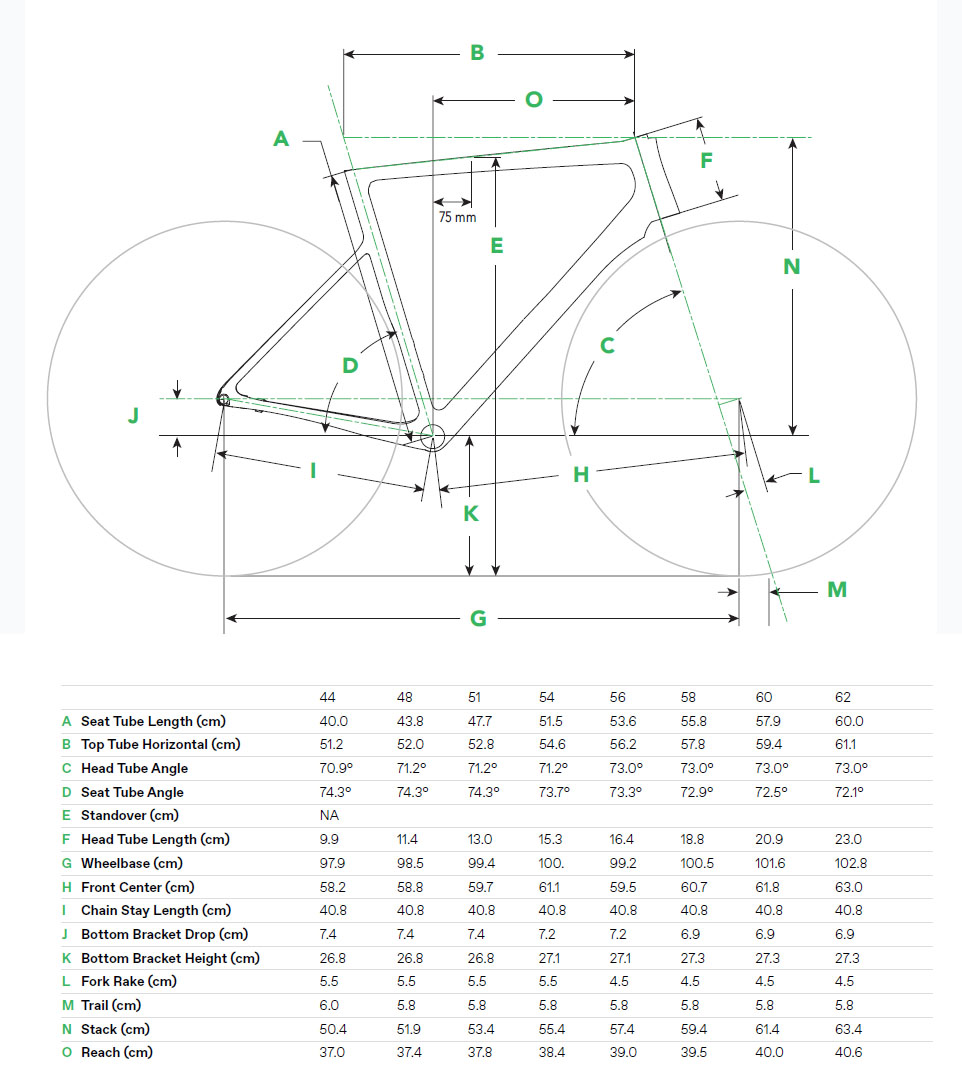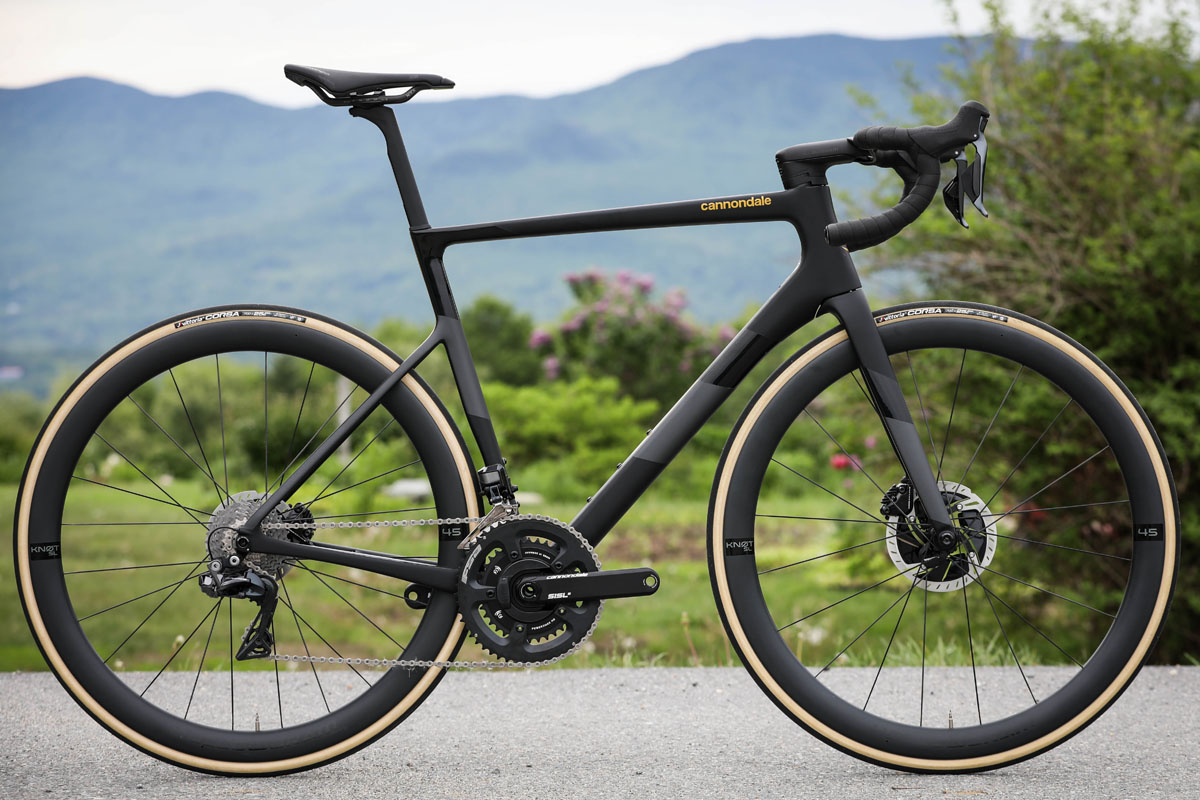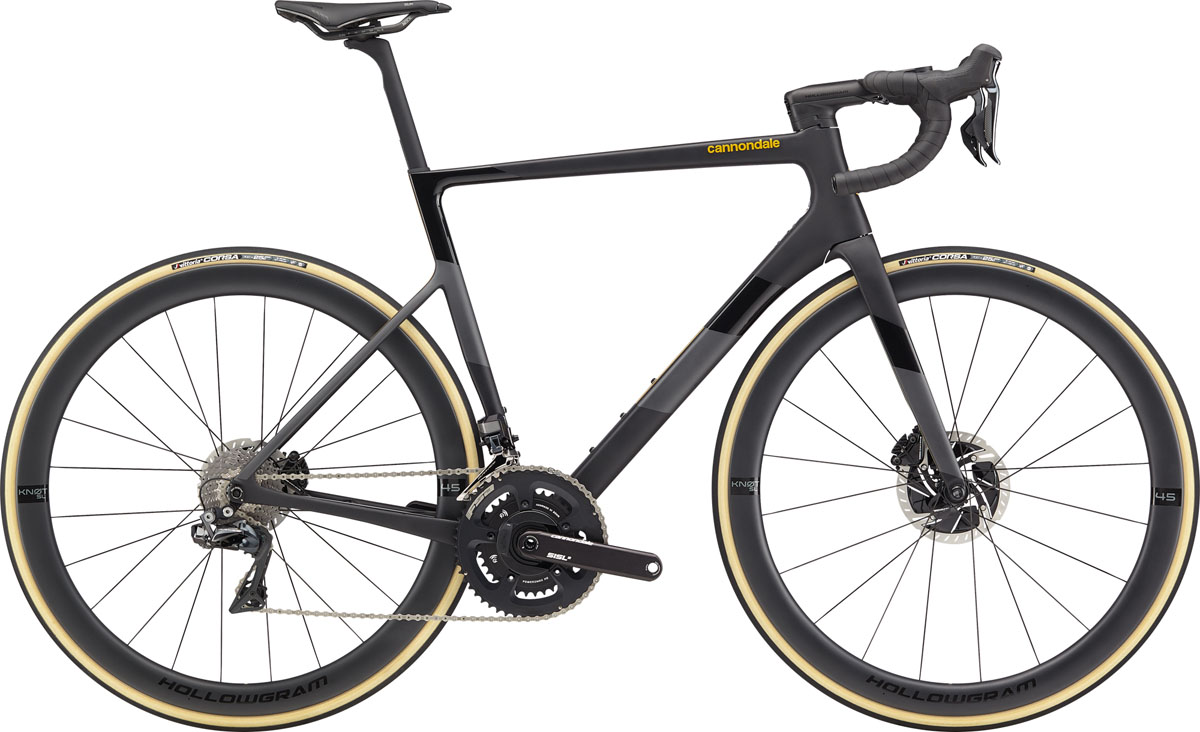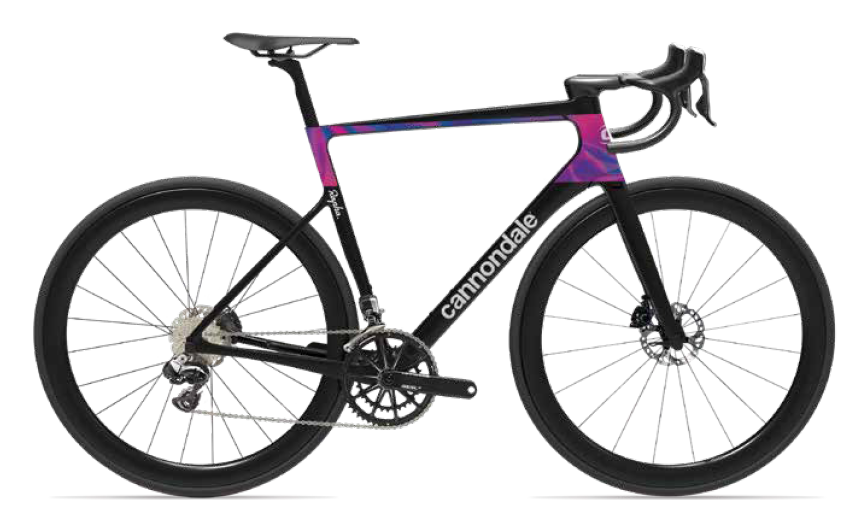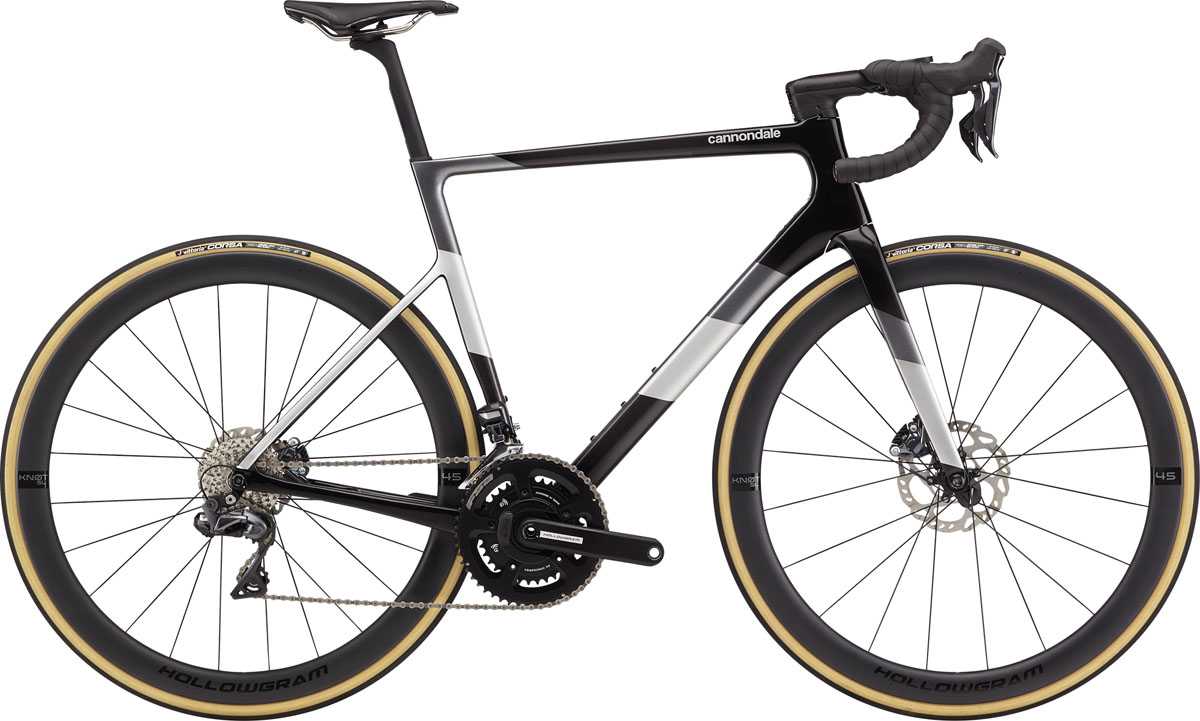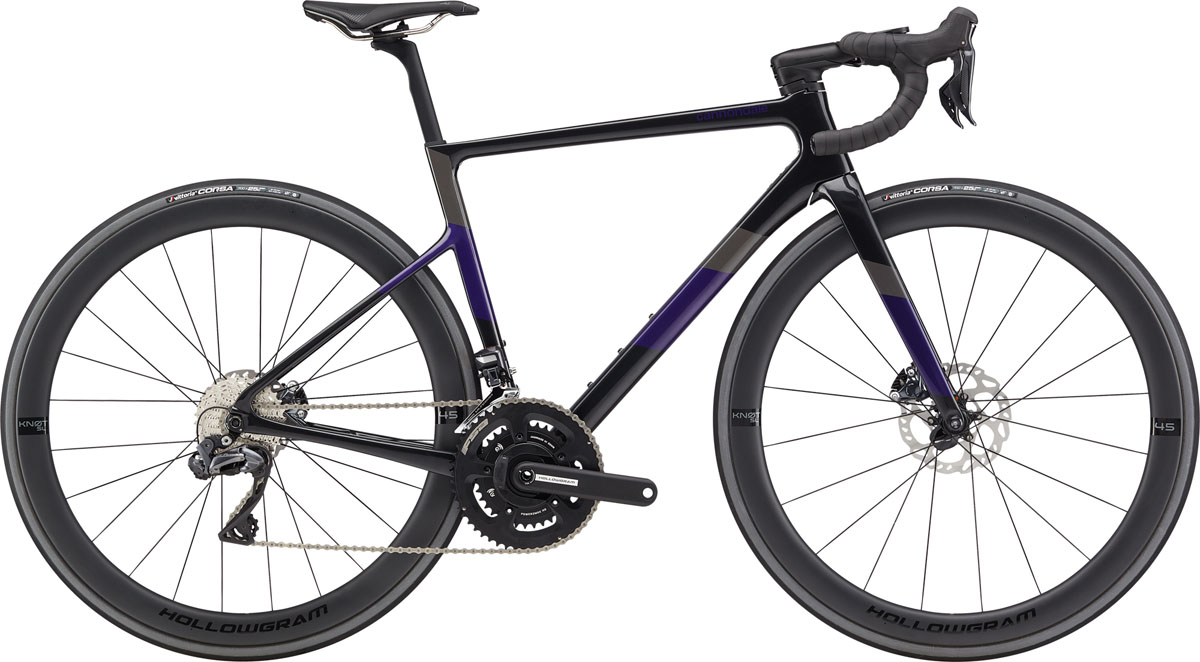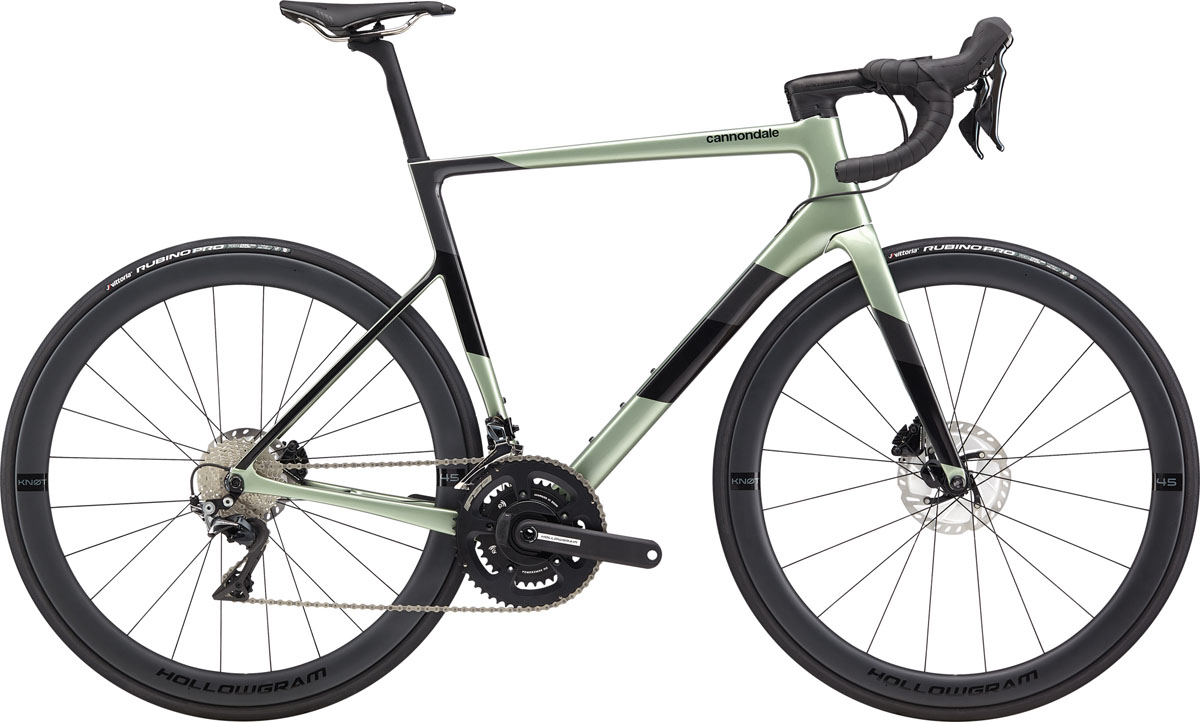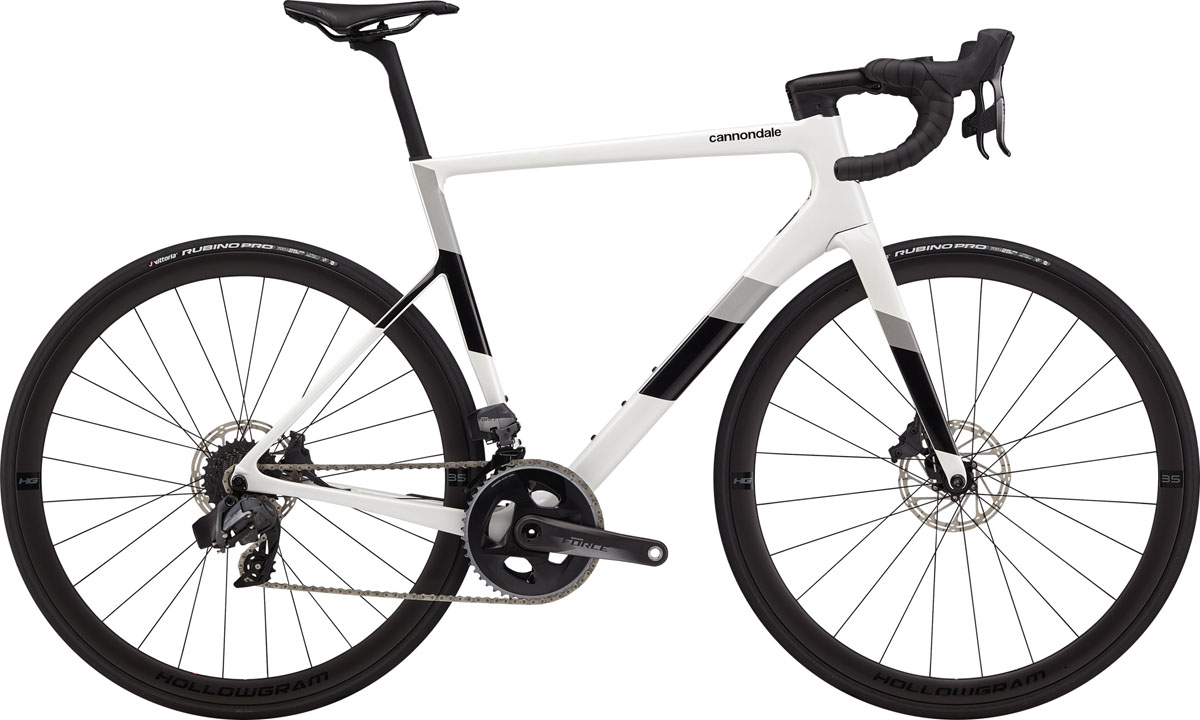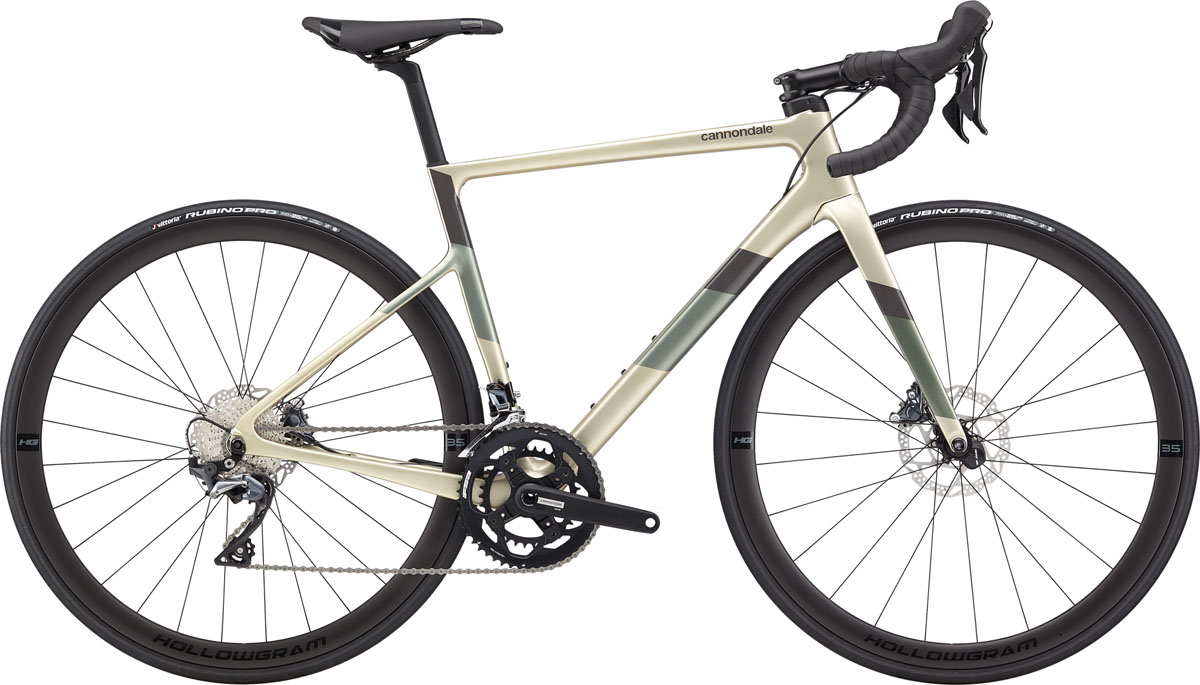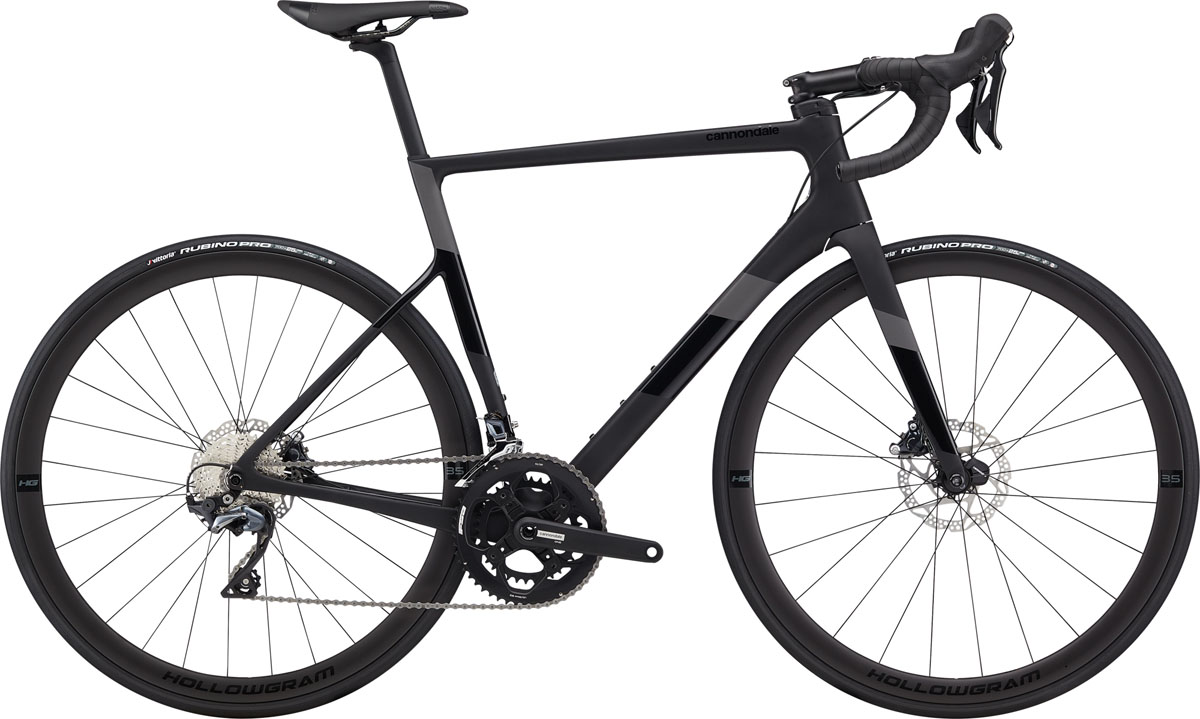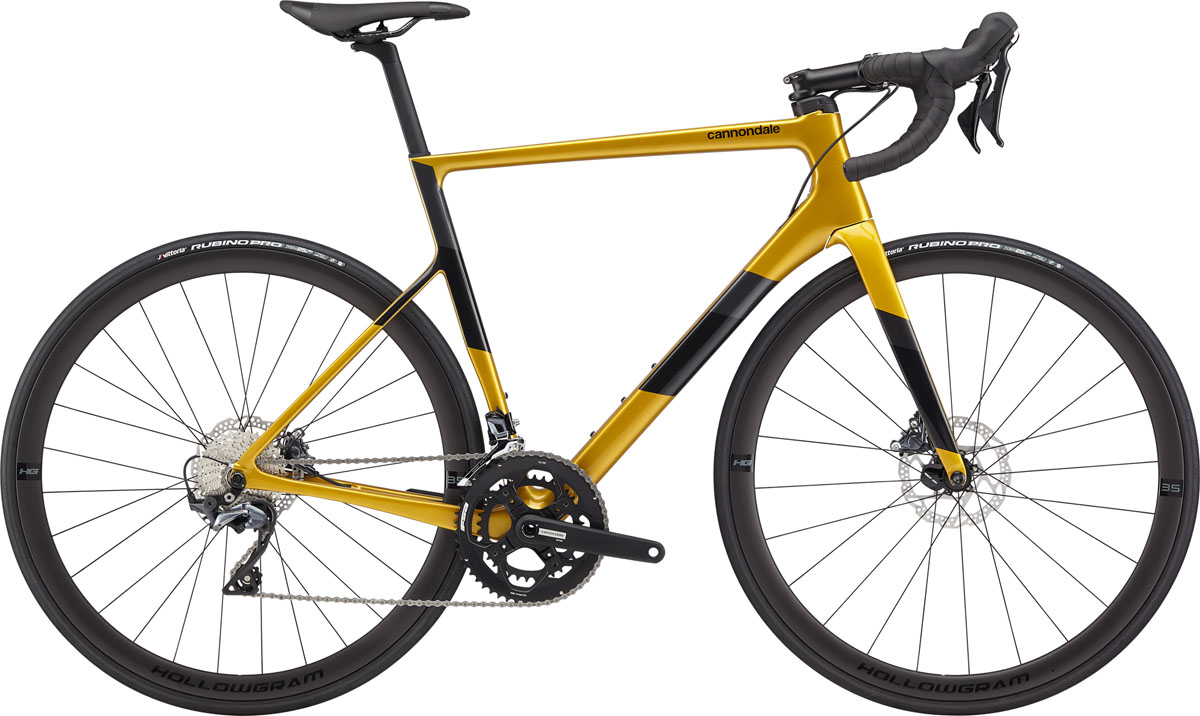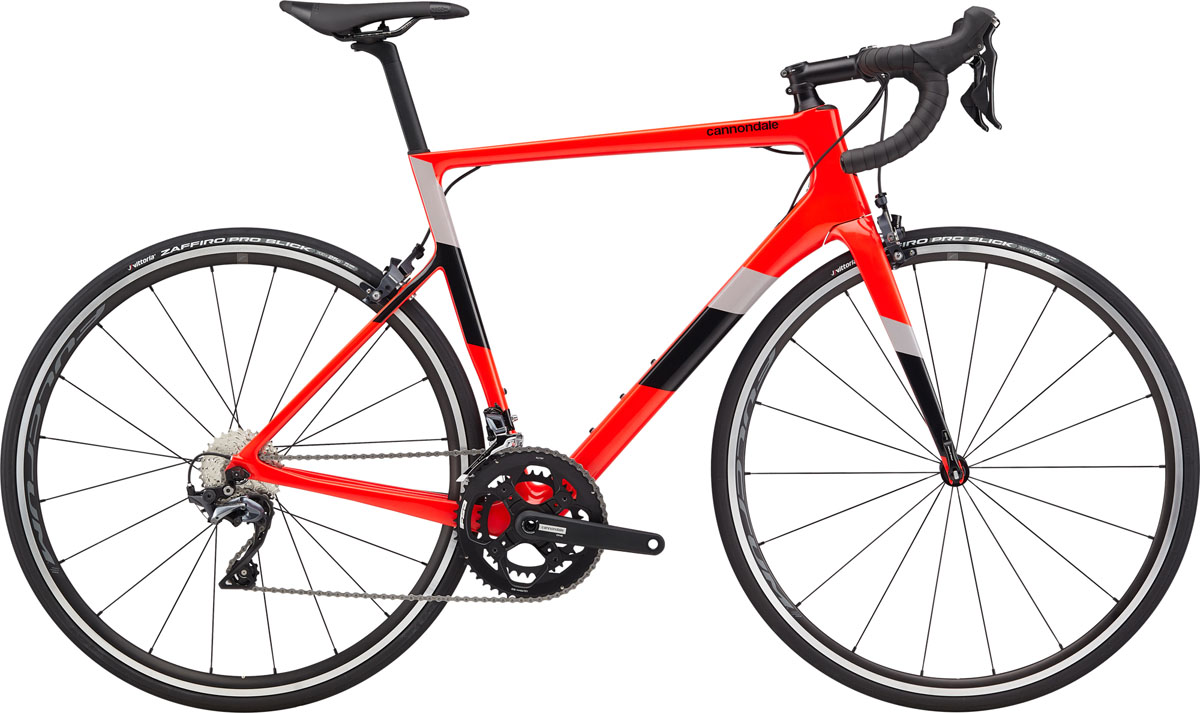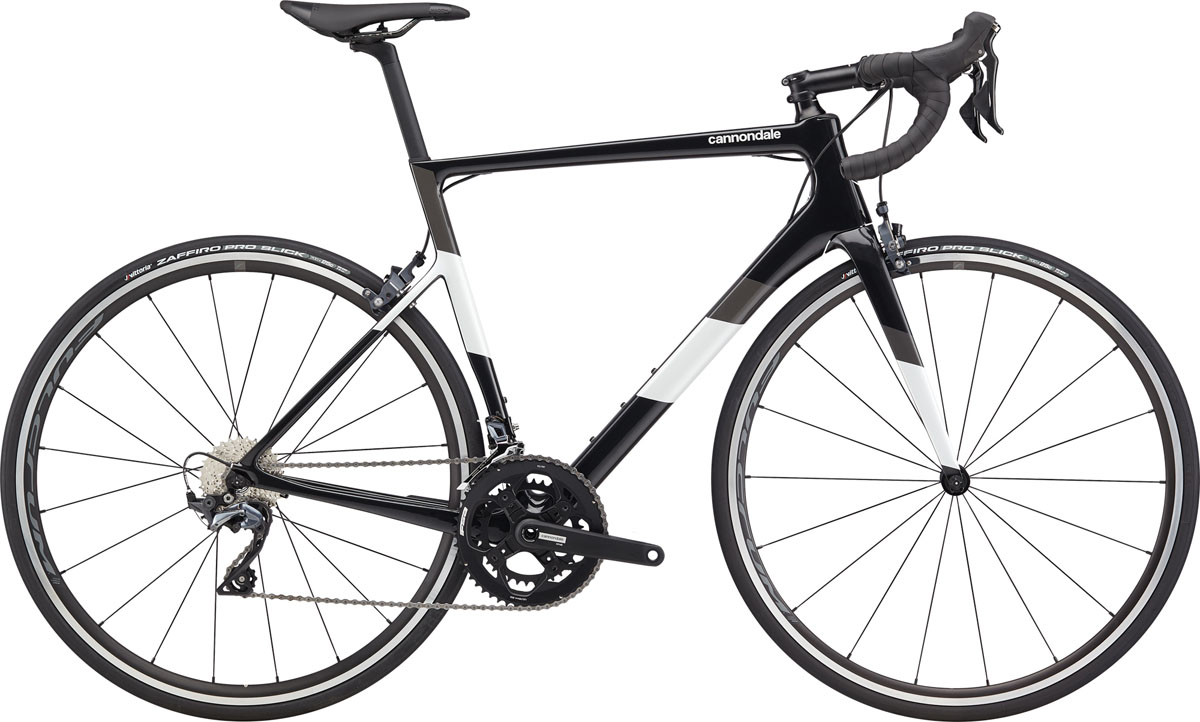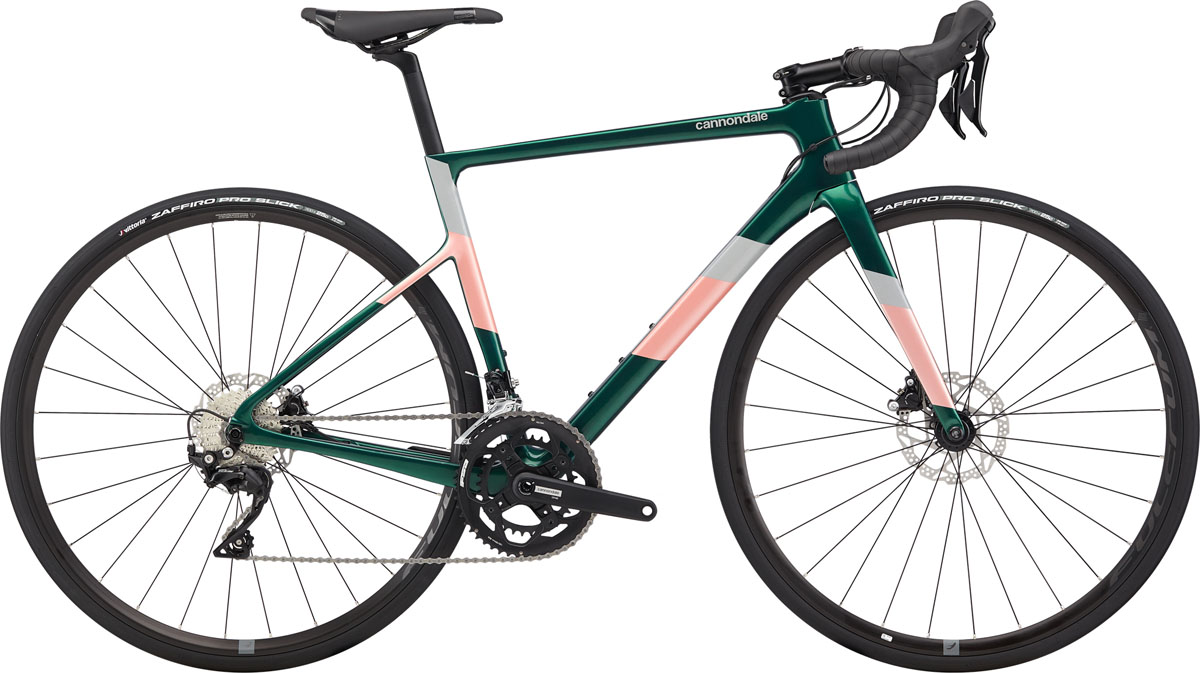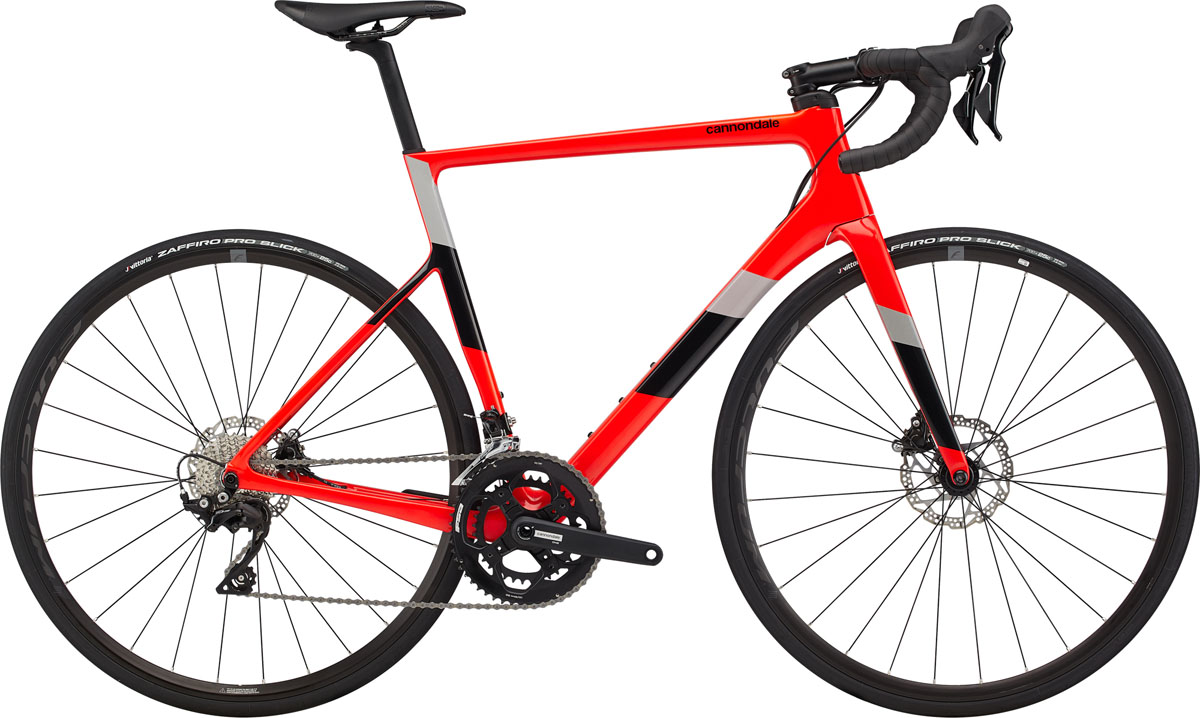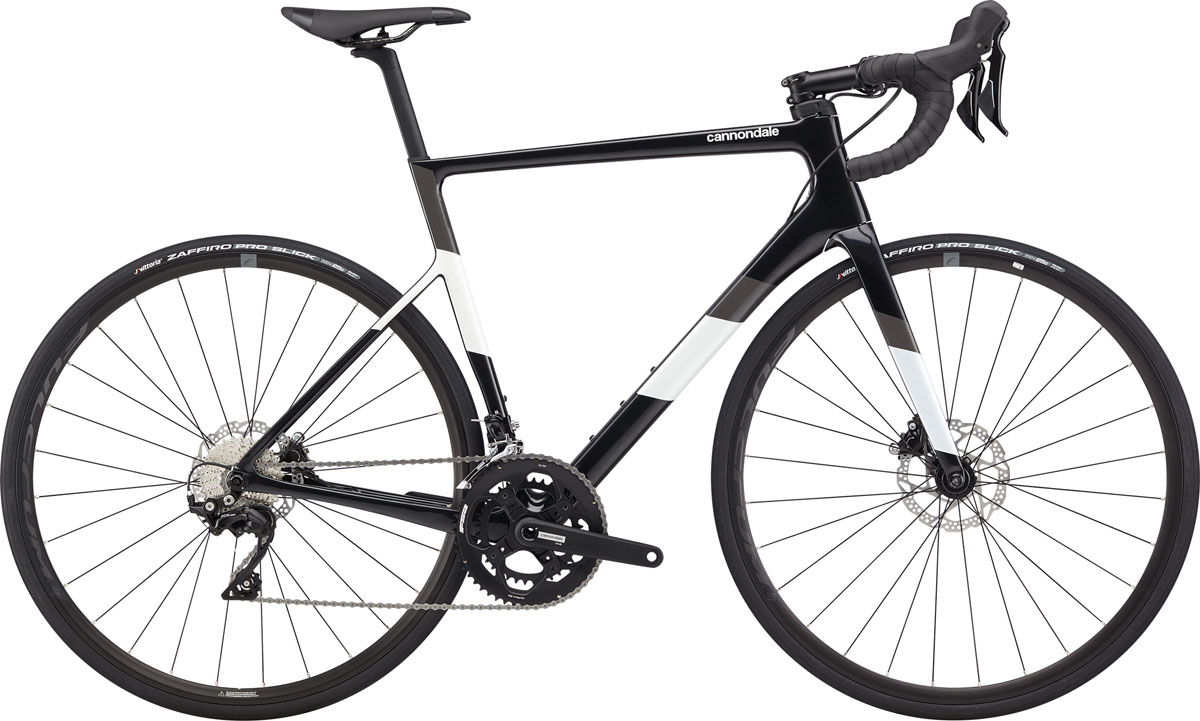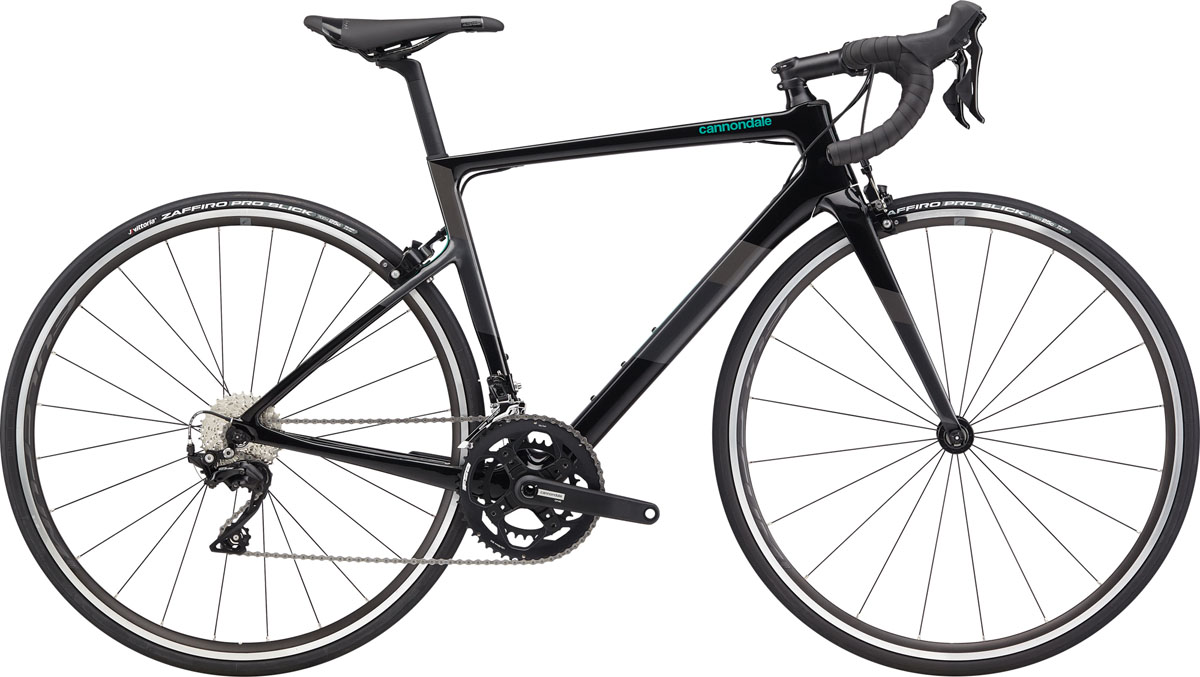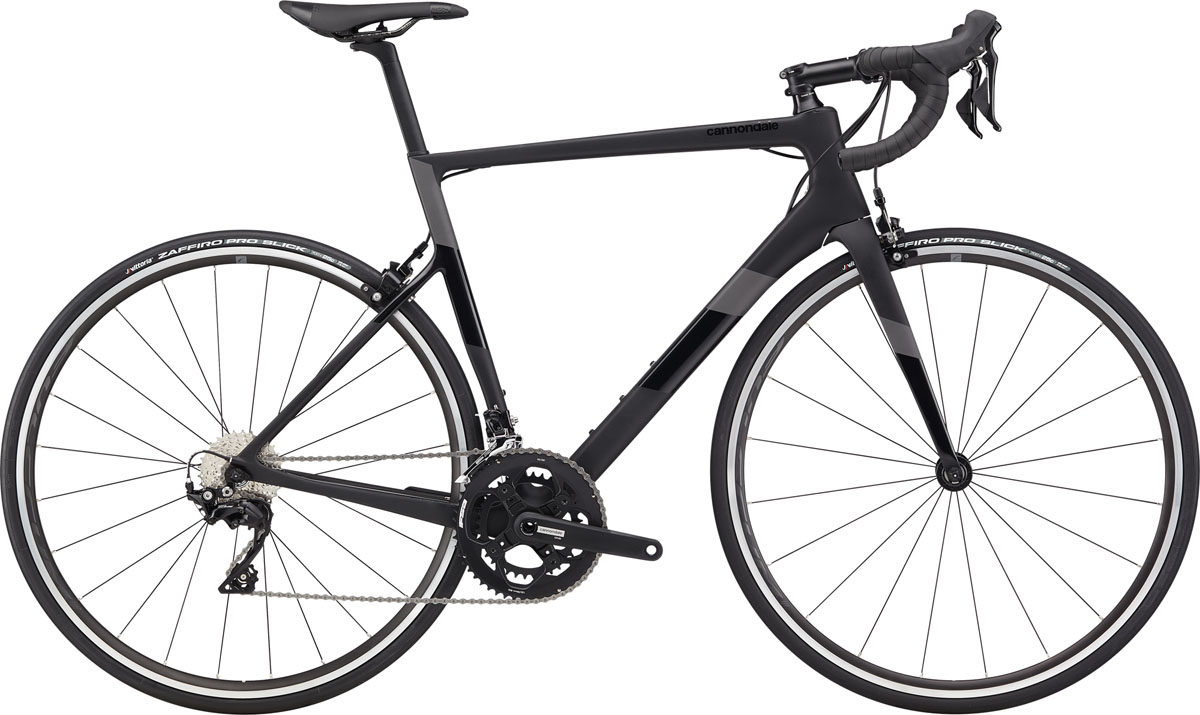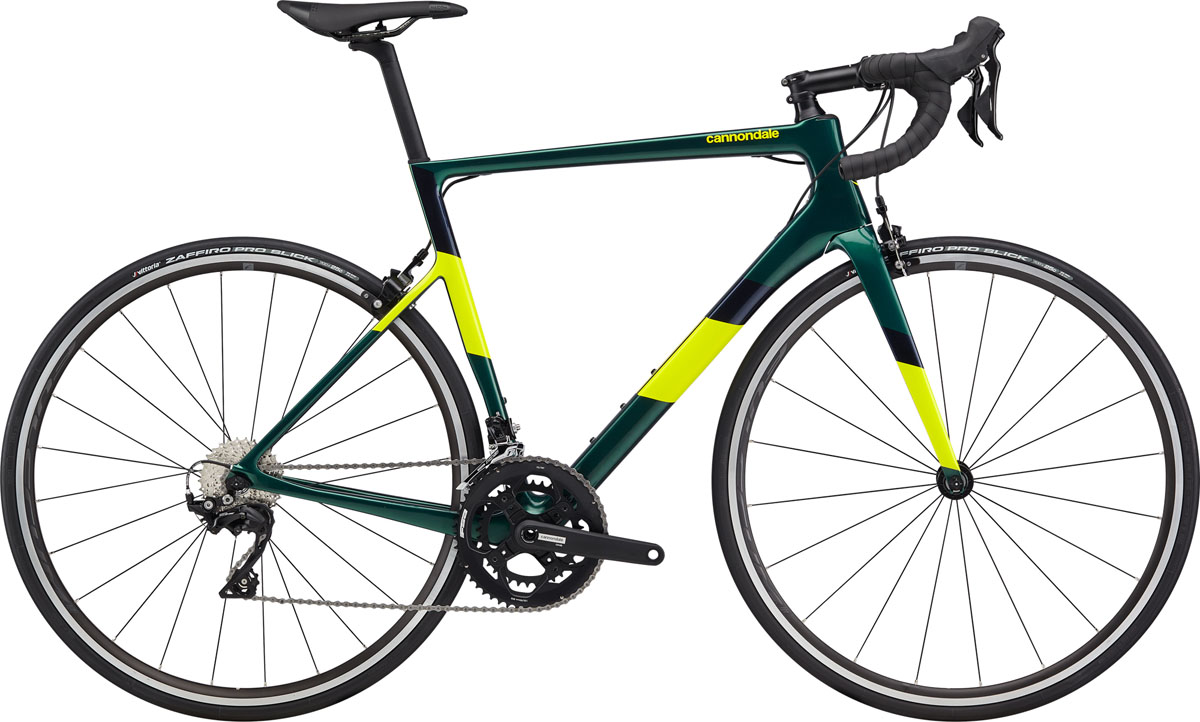At first glance, you might not even realize that the new SuperSix EVO is even a Cannondale. Like the new Topstone Carbon (and the SystemSix), the SuperSix EVO is part of a new era for Cannondale with advanced designs and an all new look. Gone are the large logos that covered many of the tubes, only to be replaced with a subdued paint job and very minimal branding with a small ‘Cannondale’ on the top tube and their ‘C’ on the head tube. But the paint is just a small part of the story. Underneath, the SuperSix EVO is all new with a frame that is far more aerodynamic, more comfortable, and still very light.
According to Cannondale, the SuperSix EVO story actually starts 3-4 years ago with the SystemSix. Thanks to the work of some new additions to the Cannondale Brand Team, the company “learned how to make really fast bikes again, and learned how to win again.” The jumping off point for all of this was the new SystemSix which included advanced integration and aerodynamics, but also a new approach to graphic treatment.
While the SystemSix is all about making the fastest race bike possible, the SuperSix EVO is more about being fast while still being comfortable. Cannondale still considers the EVO a race bike, but a race bike that is versatile enough to also be a daily driver for someone who doesn’t race but still likes to go fast. Calling it the “fastest light bike,” the EVO adds a number of integrated features as well as a completely new frame tube design to create a bike that is both light and fast – and substantially different than the previous SuperSix EVO.
Aerodynamic, comfortable, & light
Cannondale states that one of the biggest engineering challenges for the EVO was to make the bike more comfortable and aerodynamic while keeping it the same weight or lighter. One of the most visible changes is the move to dropped seat stays like the Topstone Carbon. Many brands have now jumped on the dropped stay bandwagon as they have proven to be more aerodynamic while also improving frame comfort. Between the stays and the KNOT 27 seatpost, the EVO claims to have 18% better compliance than the previous model.
Elsewhere, the carbon frames take a page from the highly truncated low aspect ratio airfoil playbook with ‘D’ shaped tubing that offer aerodynamic gains while reducing weight compared to a full aero tube profile. The shape also helps to balance frame stiffness while maintaining a more classic look. This design is said to save 30 watts over the previous SuperSix EVO frame design at 30mph.
Even with the slimmer aero tubing, Cannondale still was highly focused on weight and looked to other areas where they might be able to shed some grams. One of those areas was in the seatpost/seat tube with a proprietary KNOT 27 aero seat post design with an integrated internal seatpost binder. The binder design is said to be the same weight as an external 25.4mm design, while the post itself is 35g lighter than the current 25.4mm SAVE seatpost design.
Split into two carbon frame categories, the highest end bikes will feature a BallisTec High Modulus carbon build with a Proportional Response layup to keep the ride quality consistent through the size range. These Hi-Mod frames are apparently the lightest disc road bike frameset that Cannondale has ever made with 56cm frames coming in at 866g with small parts included. Standard Modulus frames are still light, coming in at 999g for a 56cm painted frame with small parts included.
In addition to being light, the EVO is also still very capable with clearance for up to 30mm tires. Available with both rim or disc brakes, the disc brake versions will include flat mount calipers with 12mm Speed Release thru axles.
Other frame details include a PF30a bottom bracket which is also used on bikes like the Slice, previous SuperSix EVO, and FSi. The downtube includes a port for Di2 integration, and the frames can be build with any mechanical or electronic drivetrain. The EVO only includes two bottle cage mounts, but the downtube mount includes three mounting bolts to adjust the position based on your needs.
KNOT Integrated
Cable routing is internal and the EVO borrows the KNOT stem and handlebar from the SystemSix which make the cables almost completely hidden. After following the underside of the KNOT bar which bolts to the KNOT stem, the cables run between the two pieces of the stem and down through the integrated spacers. From there, they enter a tunnel built in front of the headtube and route to the rest of the bike. Since the cables would be destroyed with a full turn of the handlebars, the fork features a steering lock that prevents the bars from turning too far either way.
Stem height adjustments can be made just like a regular steerer tube/spacer set up, but if you aren’t going to cut the steerer, regular round spacers can be used on top of the KNOT stem to take up the slack. 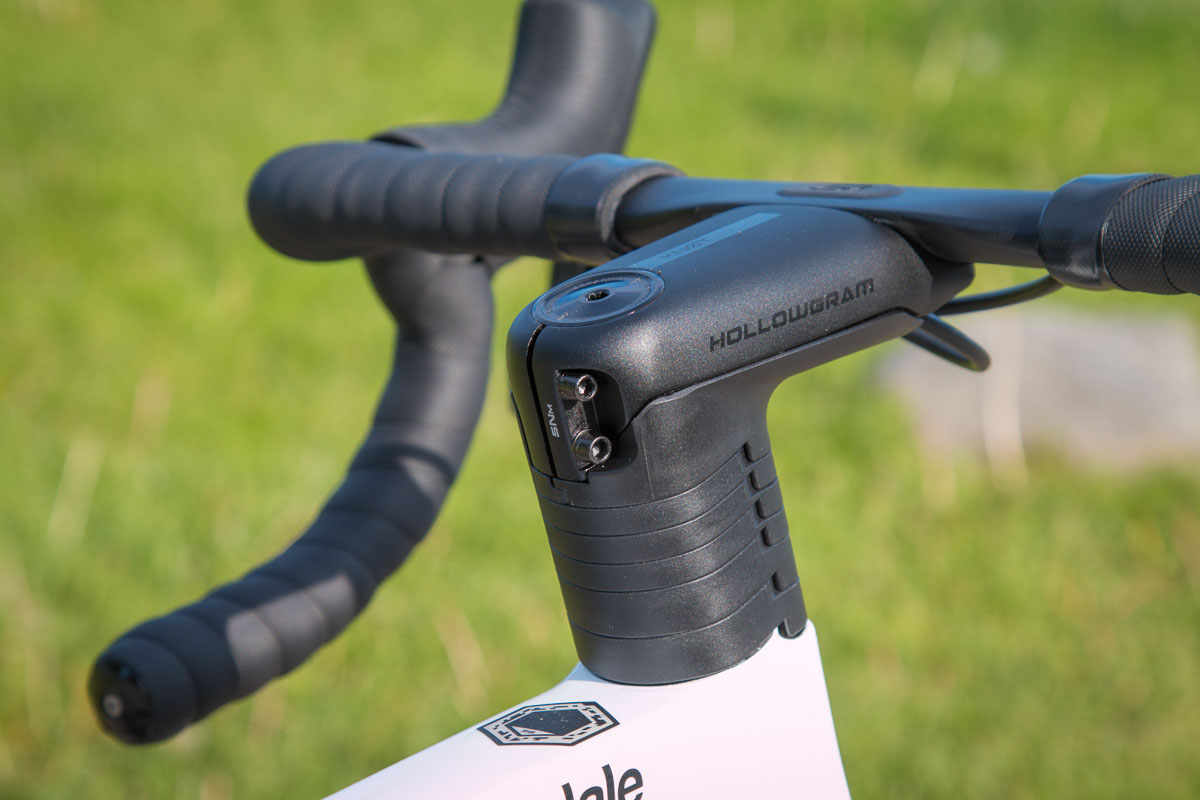
One of the biggest benefits of the KNOT system is that it gives you most of the performance of a fully integrated bar/stem (including better aerodynamics with a 9 watt savings over a round set up), while maintaining the ability to adjust the set up. The bars can be adjusted for their pitch by 8°, and either the stem or bar can be swapped out independently to adjust for different fits. The bar also includes the same integrated computer mount option that will work with Garmin or Wahoo head units.
The KNOT system also extends to the new Hollowgram 45 KNOT wheels which feature a 45mm depth. Tubeless ready, the rims have a 21mm inner width and are built to KNOT hubs with DT Swiss internals.
Electronics
One of the more interesting component decisions is the inclusion of power2max powermeters on all three of the top models – but they’ll be deactivated. If you want power, you won’t have to install anything, but you will have to pay a $490 activation fee to power2max. Considering the powermeters alone will run you $940 from power2max, this seems like it could work out in your favor if you want to run power – otherwise you’ll be carrying around a bit of extra weight.
The EVOs will also include the new Cannondale wheel sensor which can be paired with the Cannondale ride app or your GPS head unit. They also have internal memory so you don’t have to ride with any device at all, and can still get basic ride data from your ride after the fact.
Geometry
Owing to the race bike positioning of the EVO, the frames still use a fairly aggressive geometry but one that is a bit taller in stack and shorter and reach than previous. Sitting between the Synapse and the SystemSix in terms of Stack & Reach progression, the EVOs will come in eight sizes for the unisex models and the smallest four sizes for the women’s. Like the Topstone Carbon, the women’s models use the same geometry but feature shorter stems, narrower bars, different saddles, and shorter cranks with slightly different paint schemes.
Models
In all there are a dizzying array of builds and colors which should provide plenty of options to suit your needs.
SuperSix EVO Hi-Mod Disc – Dura-Ace Di2 – $11,500
SuperSix EVO Hi-Mod Disc – Ultegra Team Replica (price TBD)
When available, this will be sold as a frame set only.
